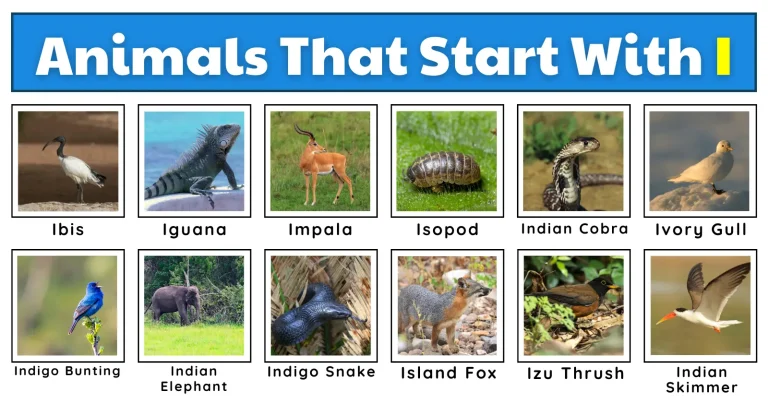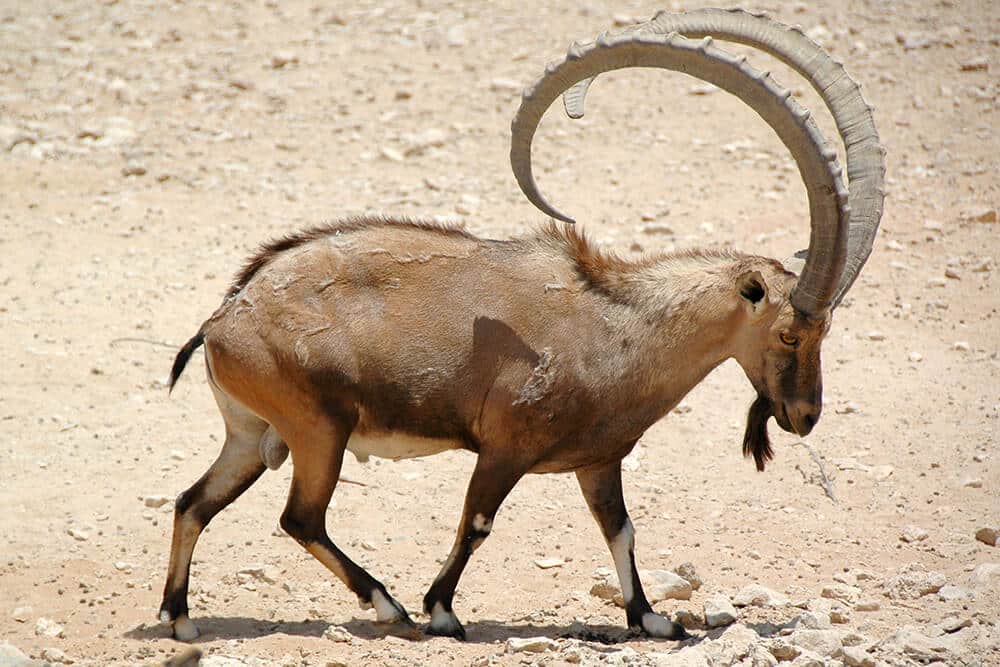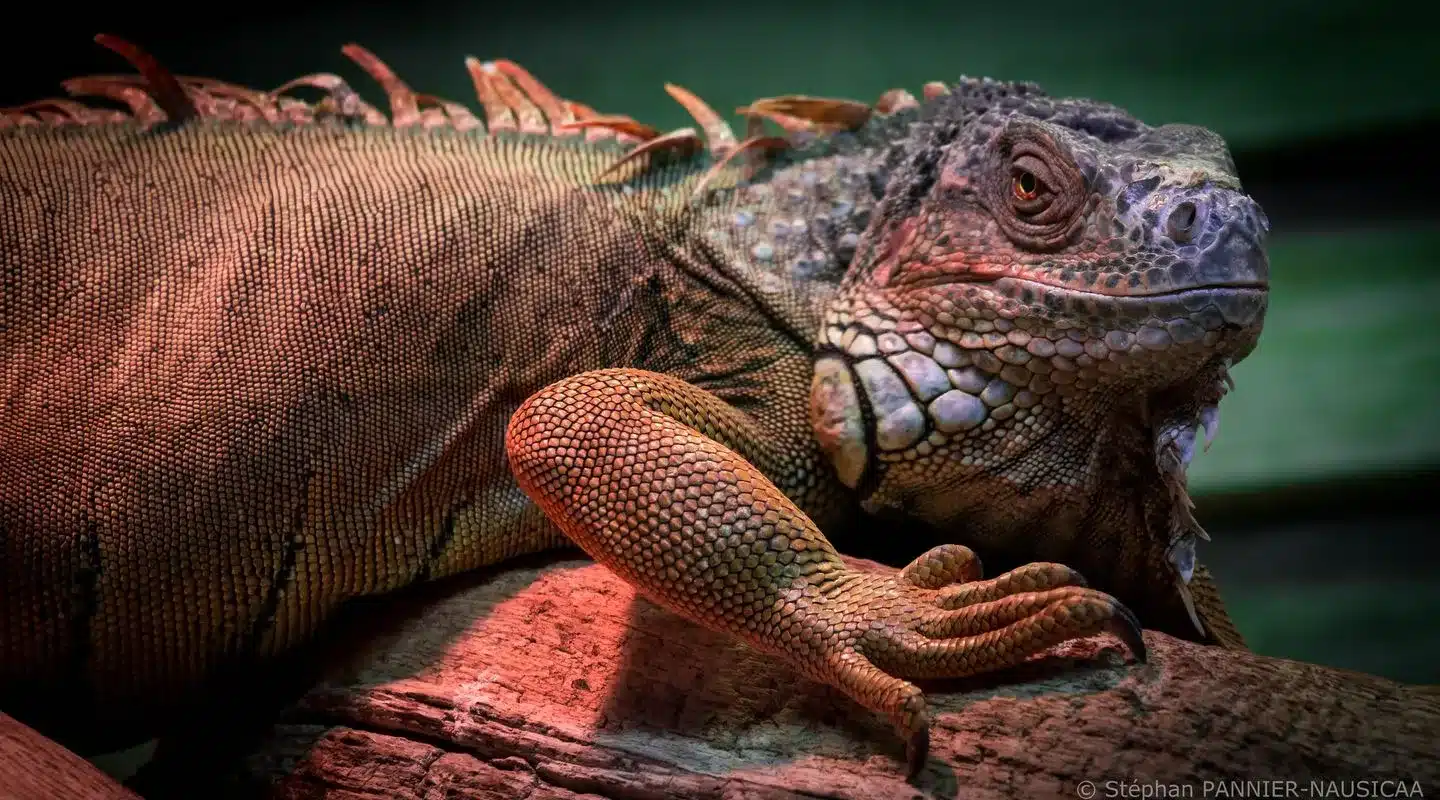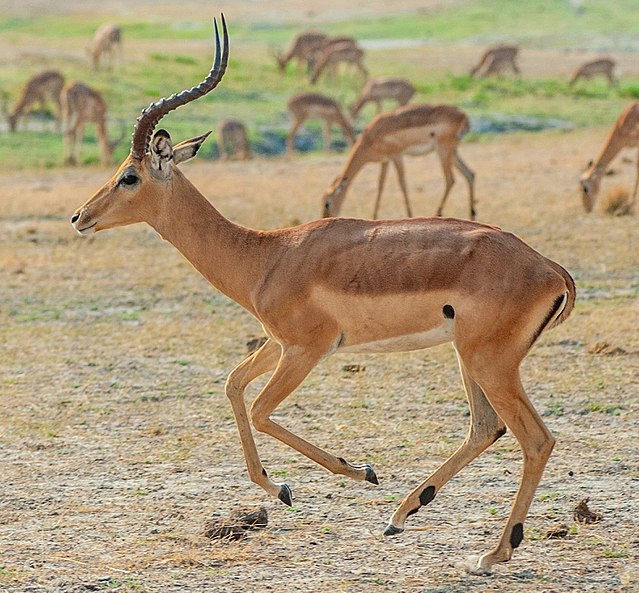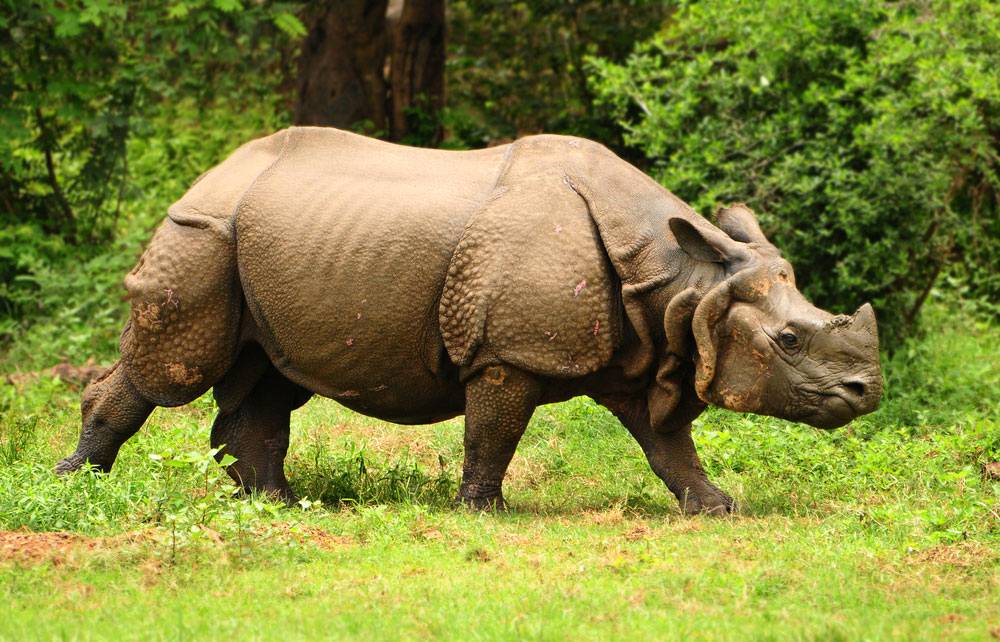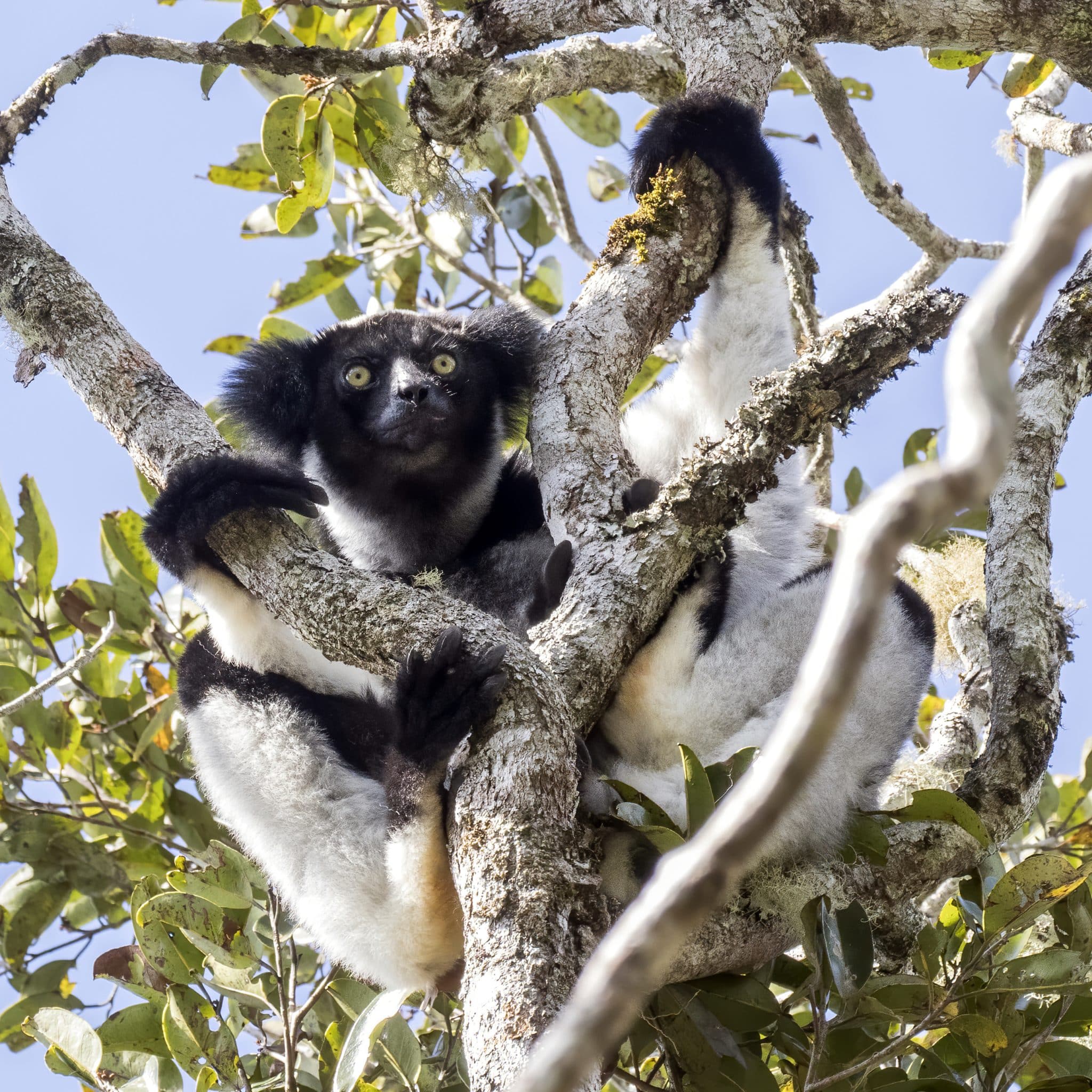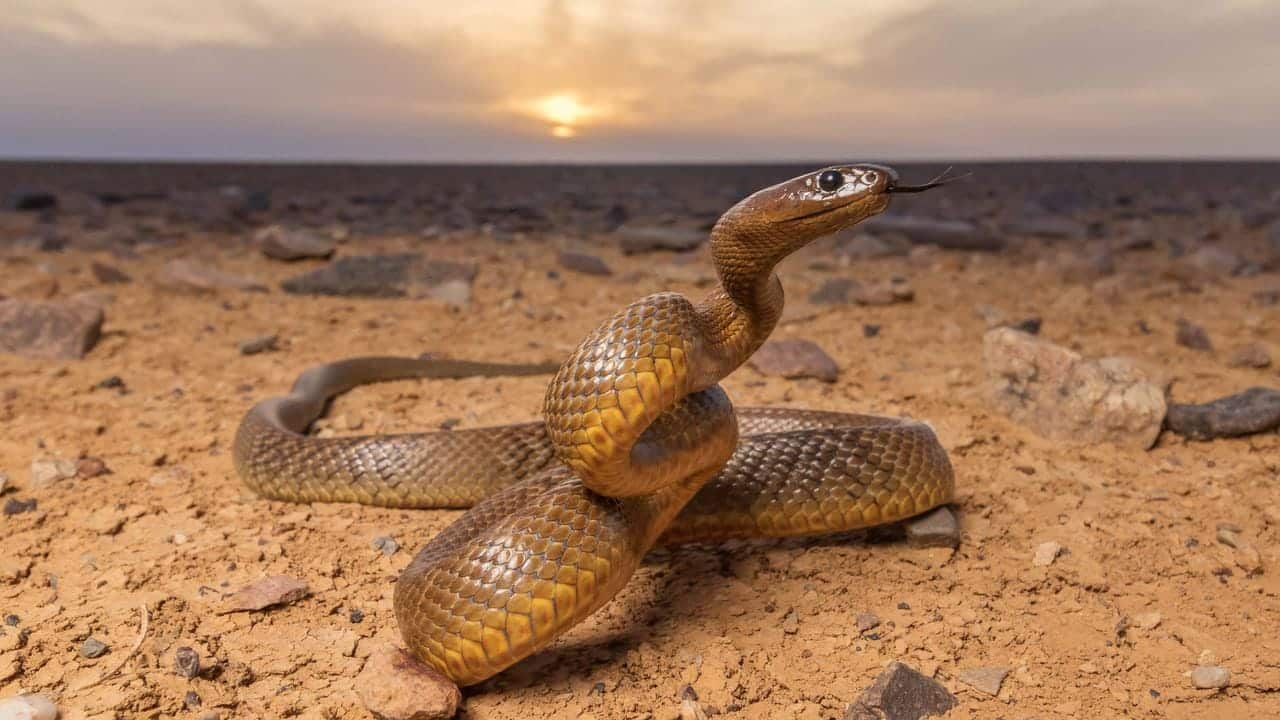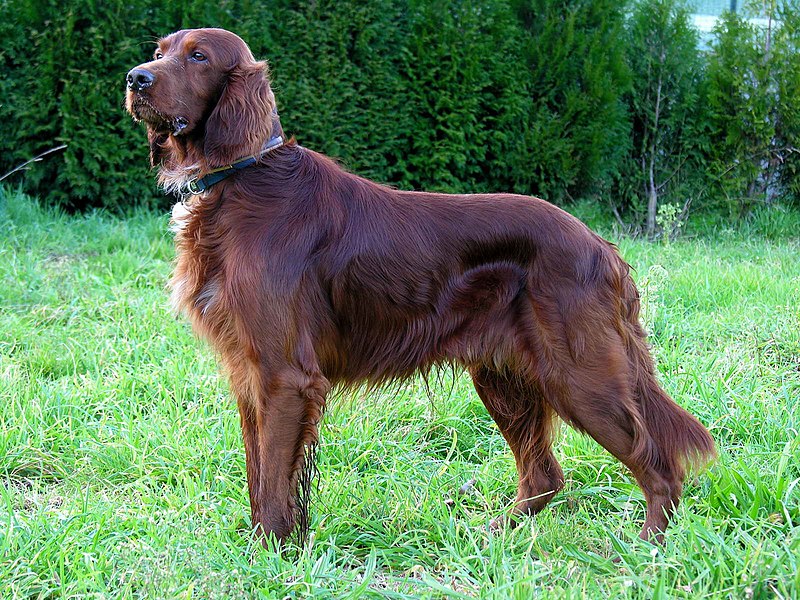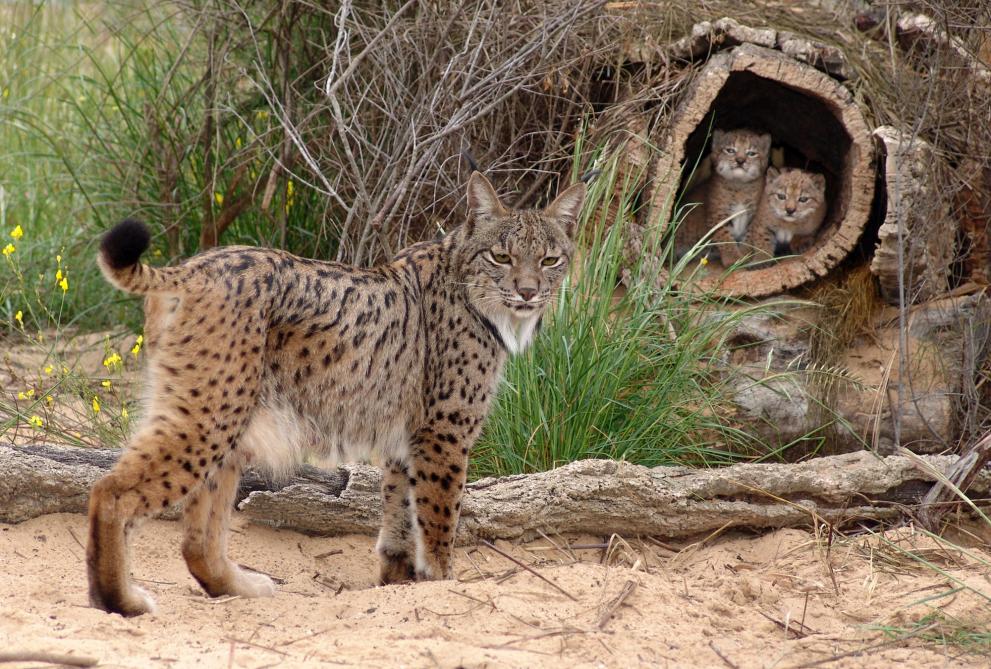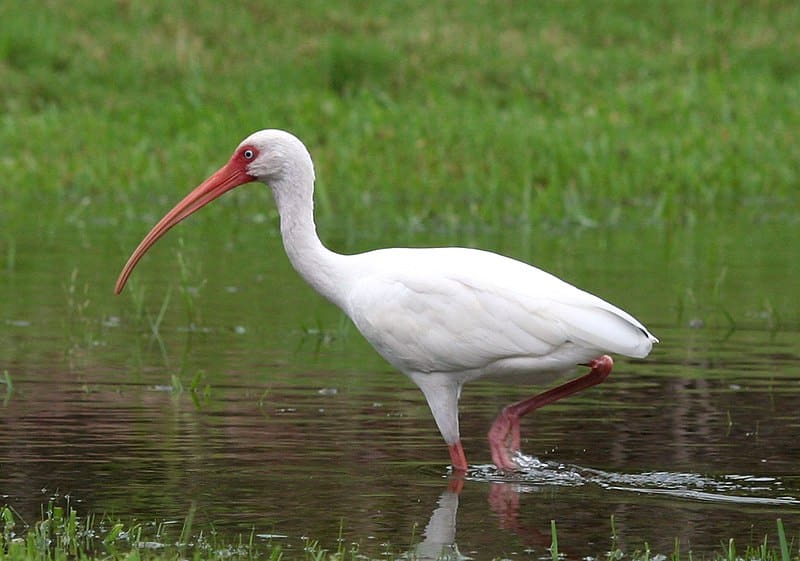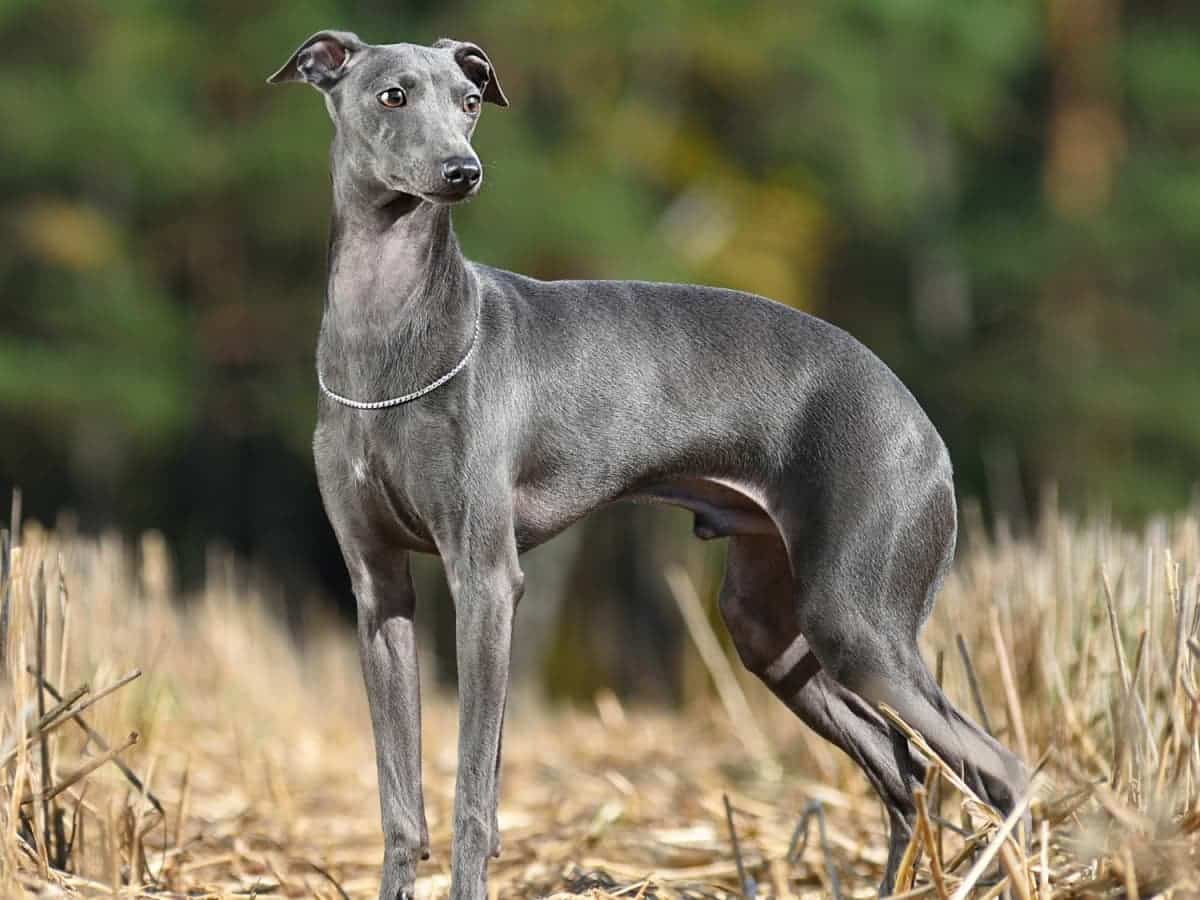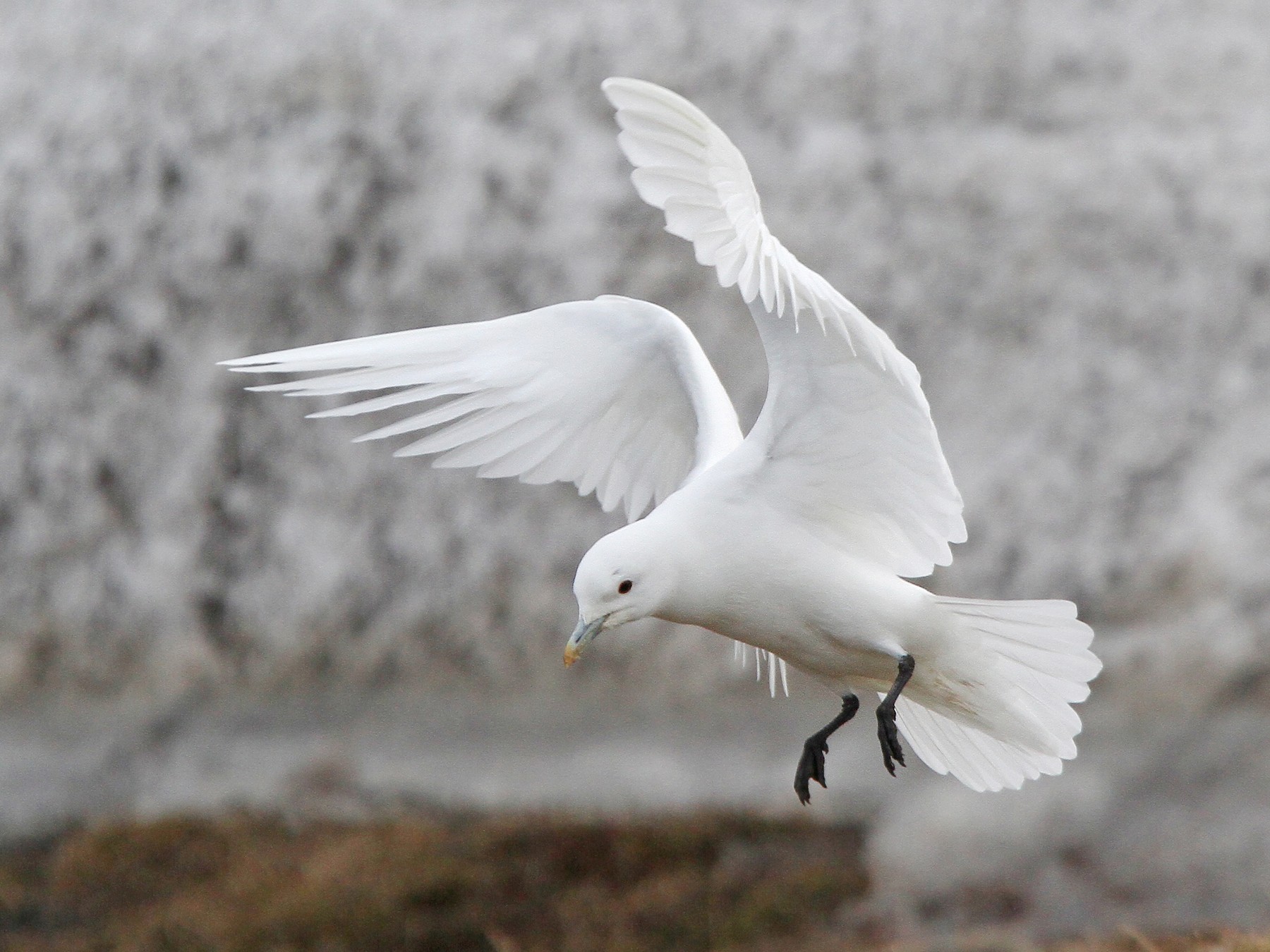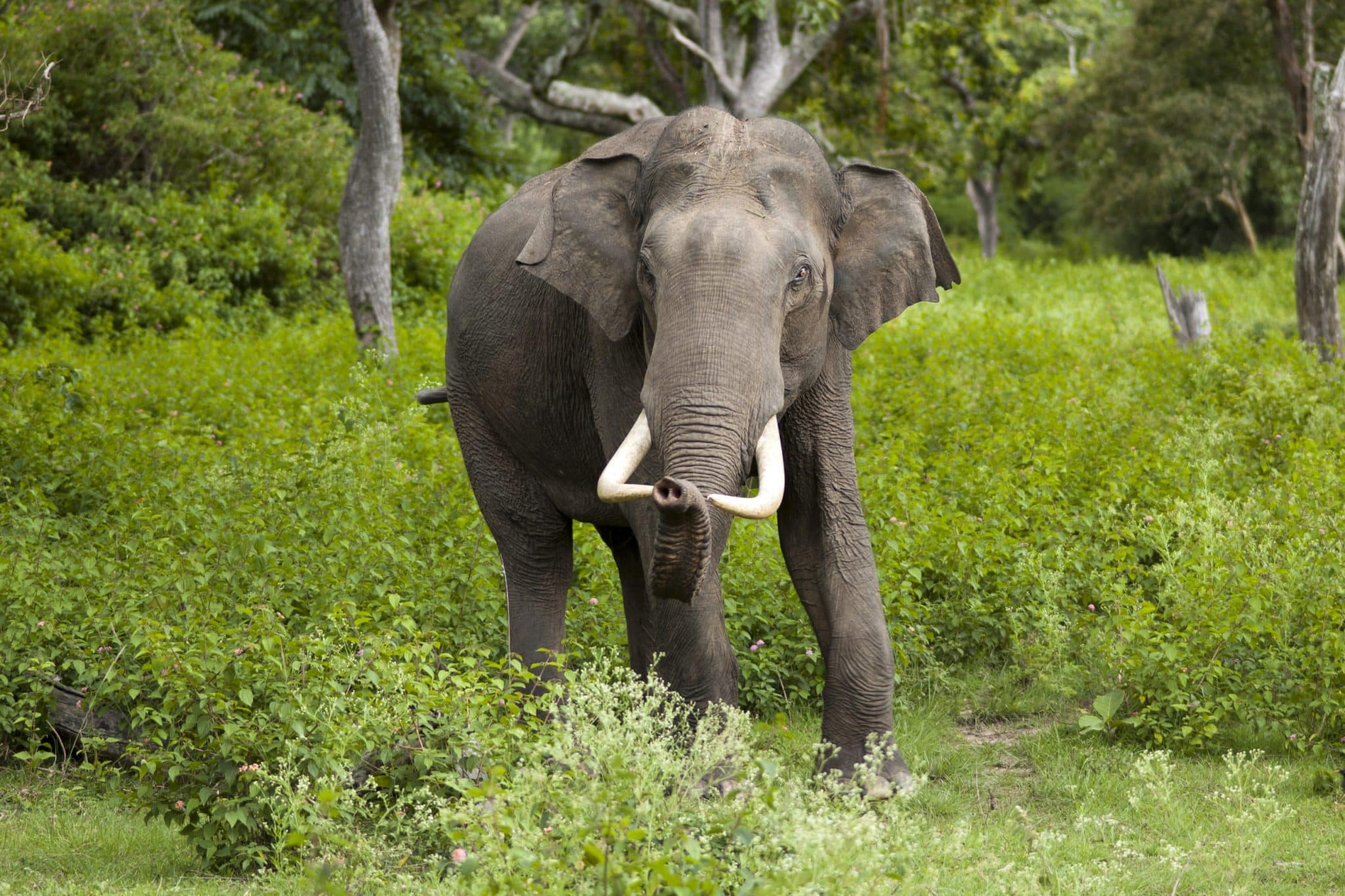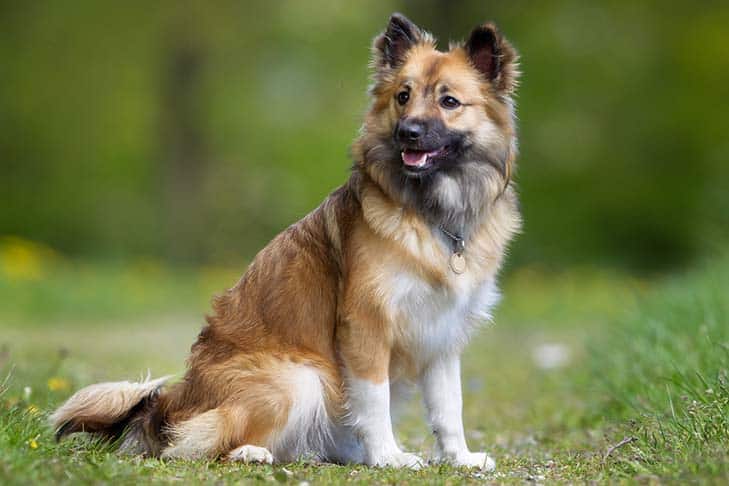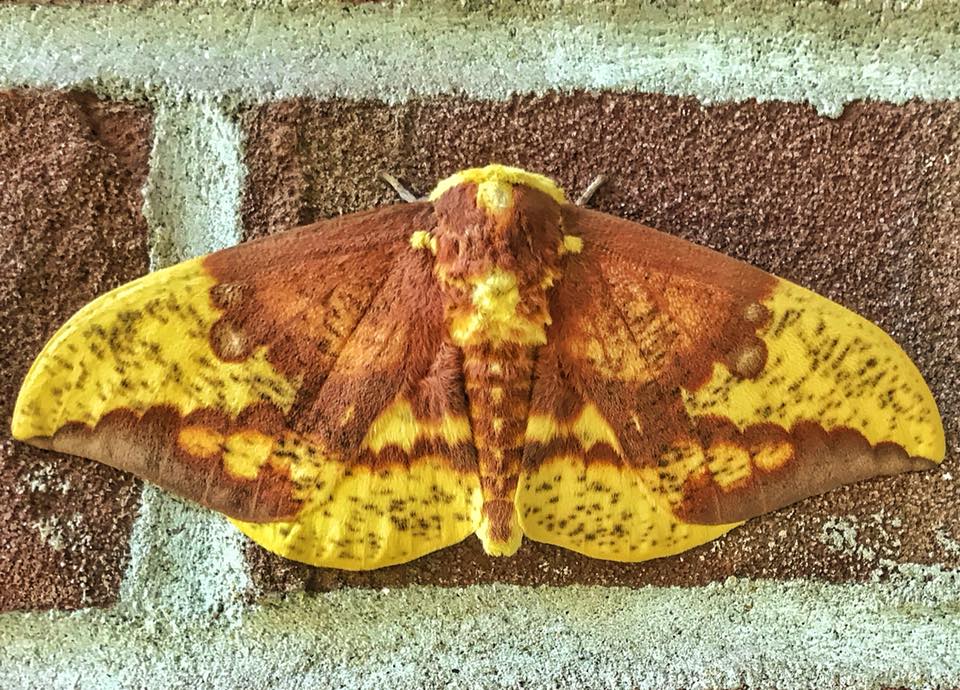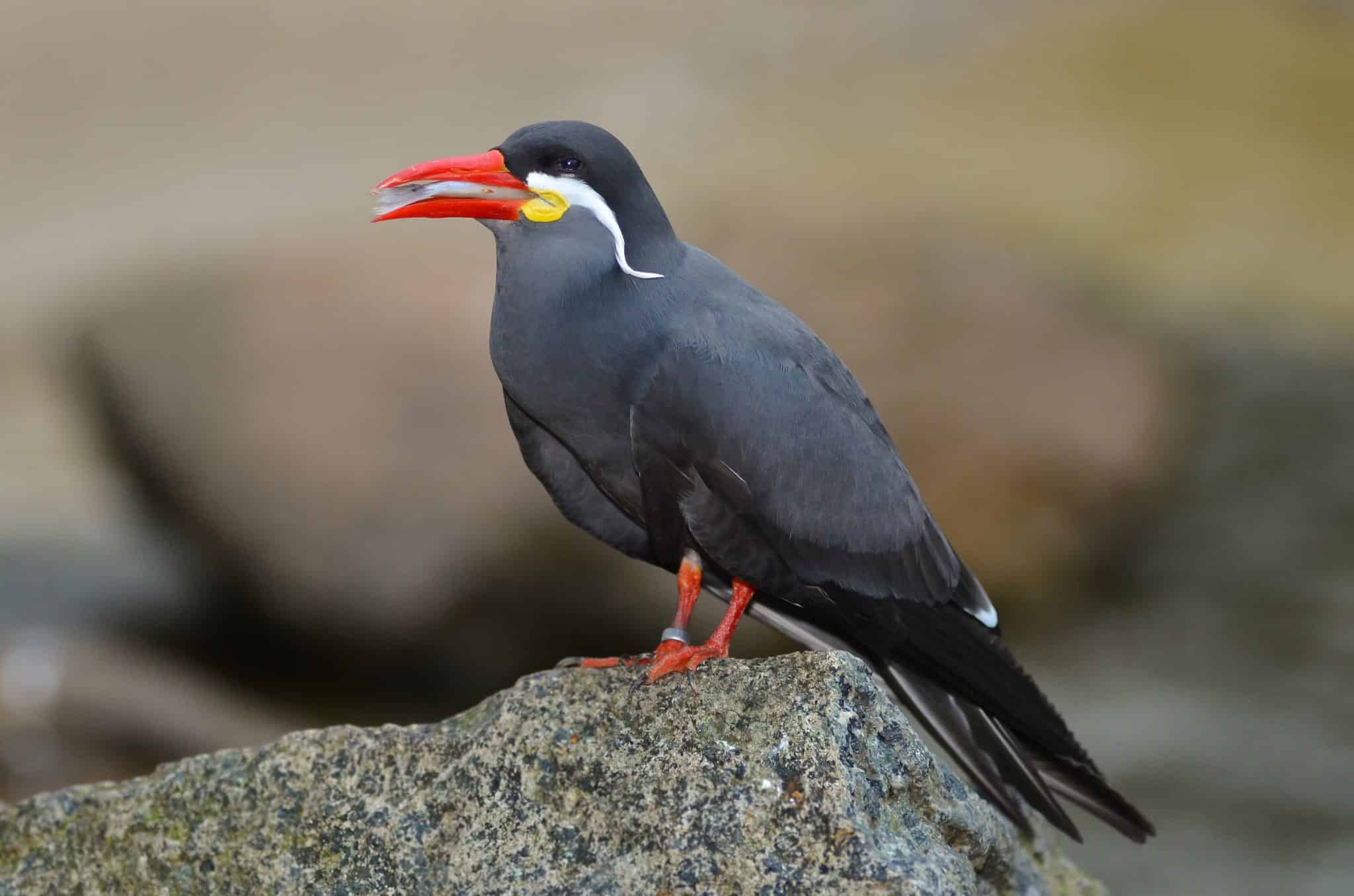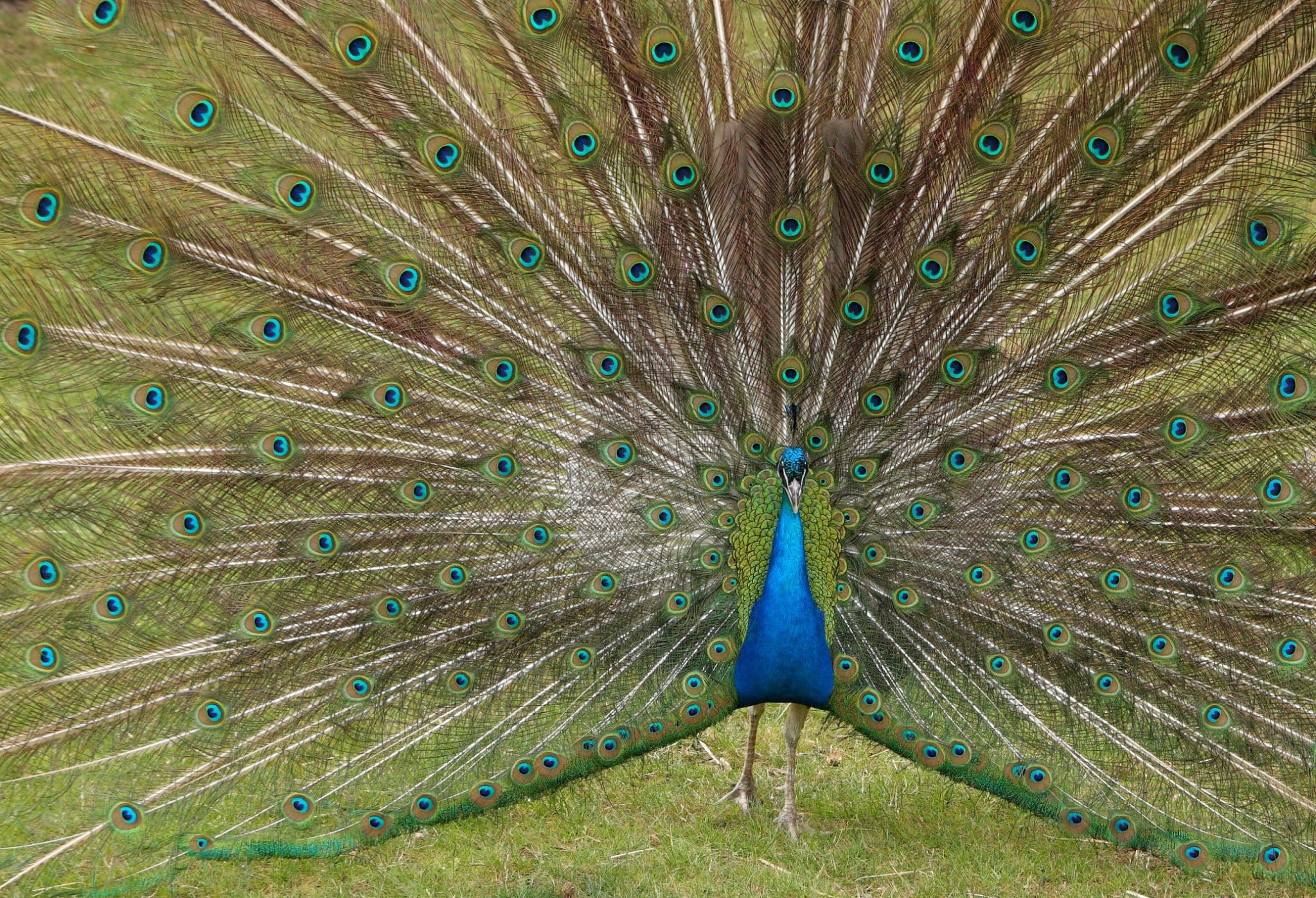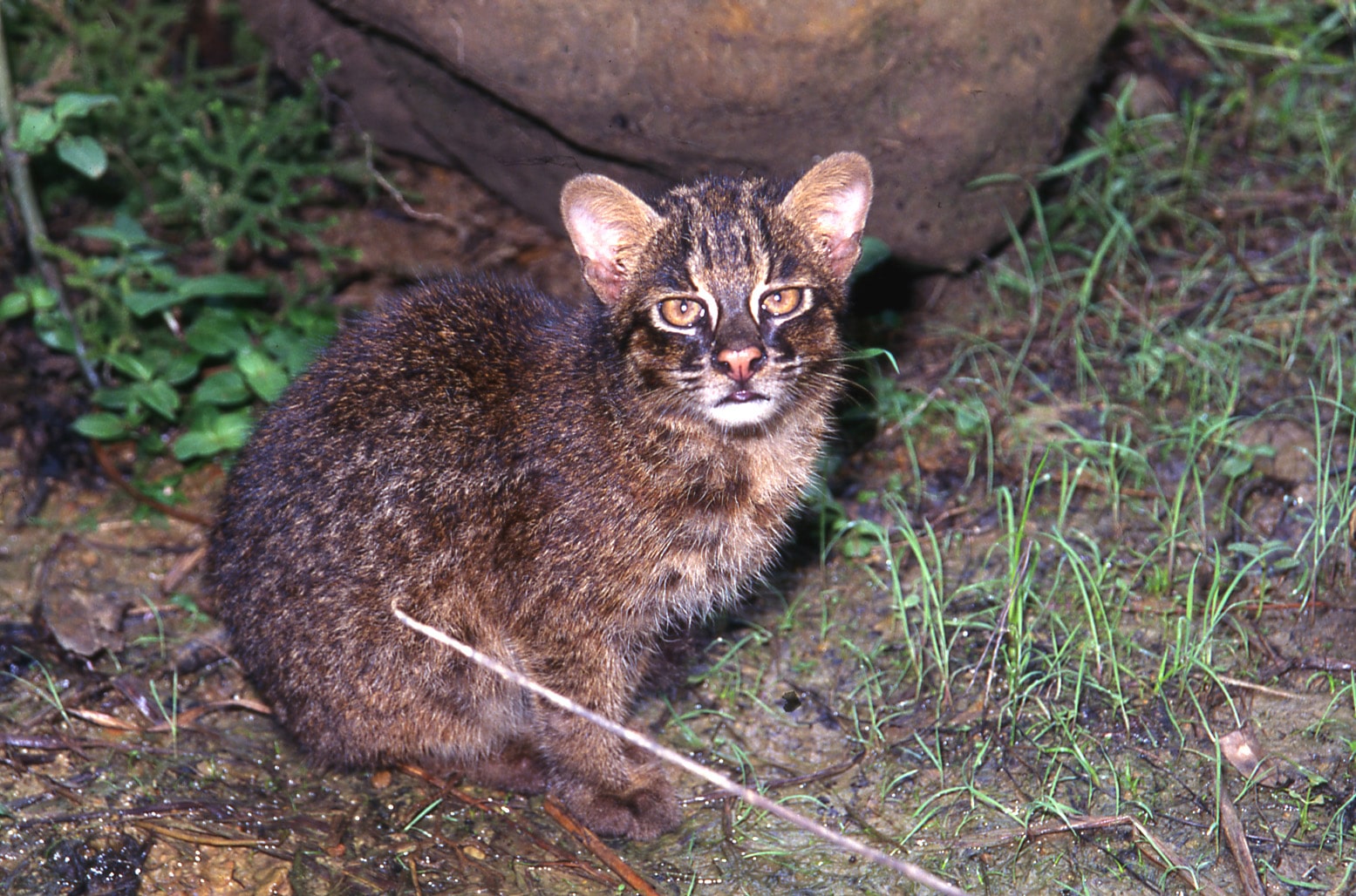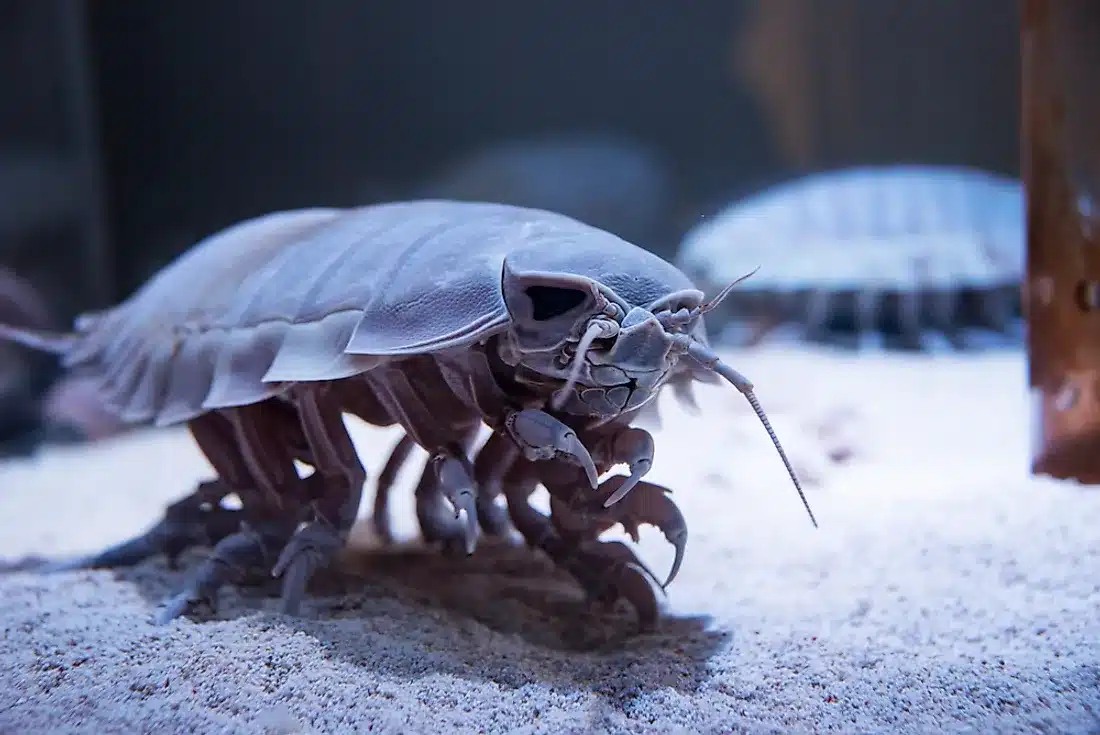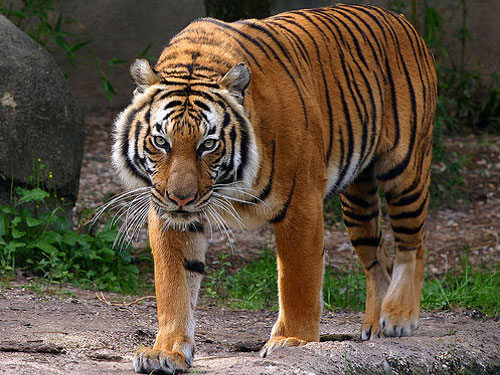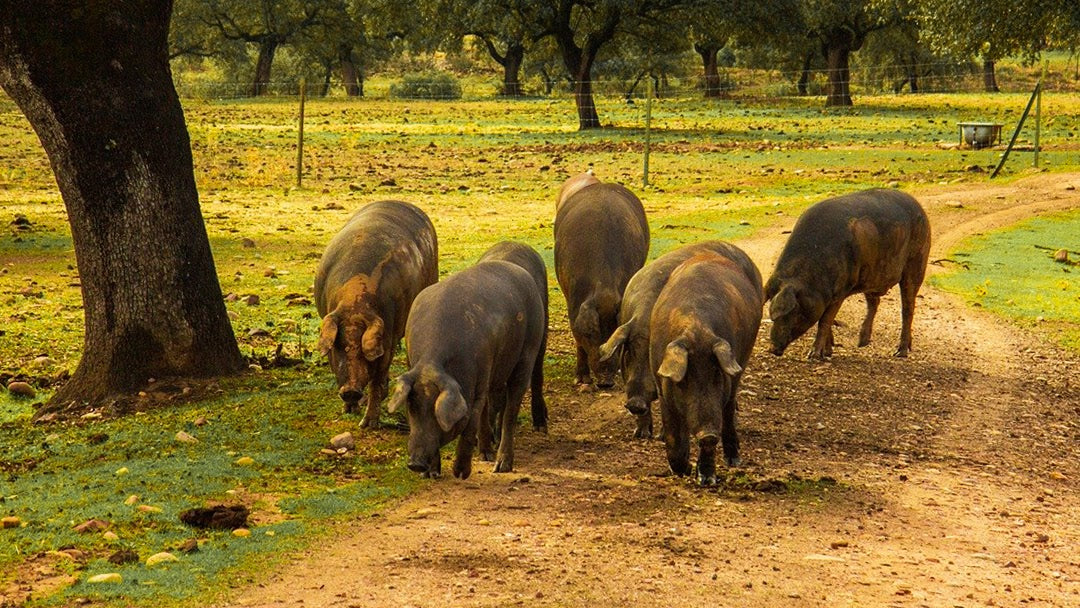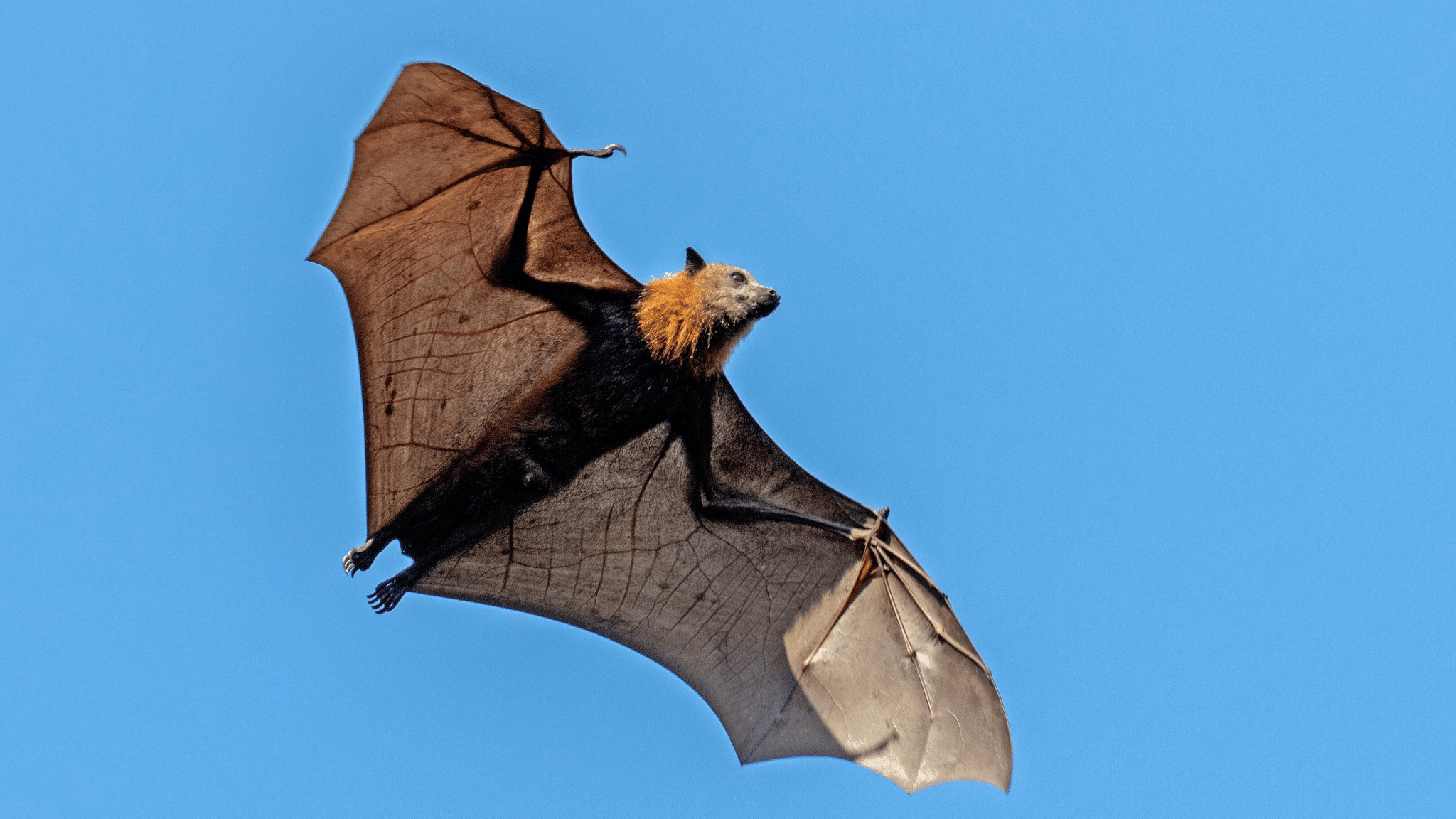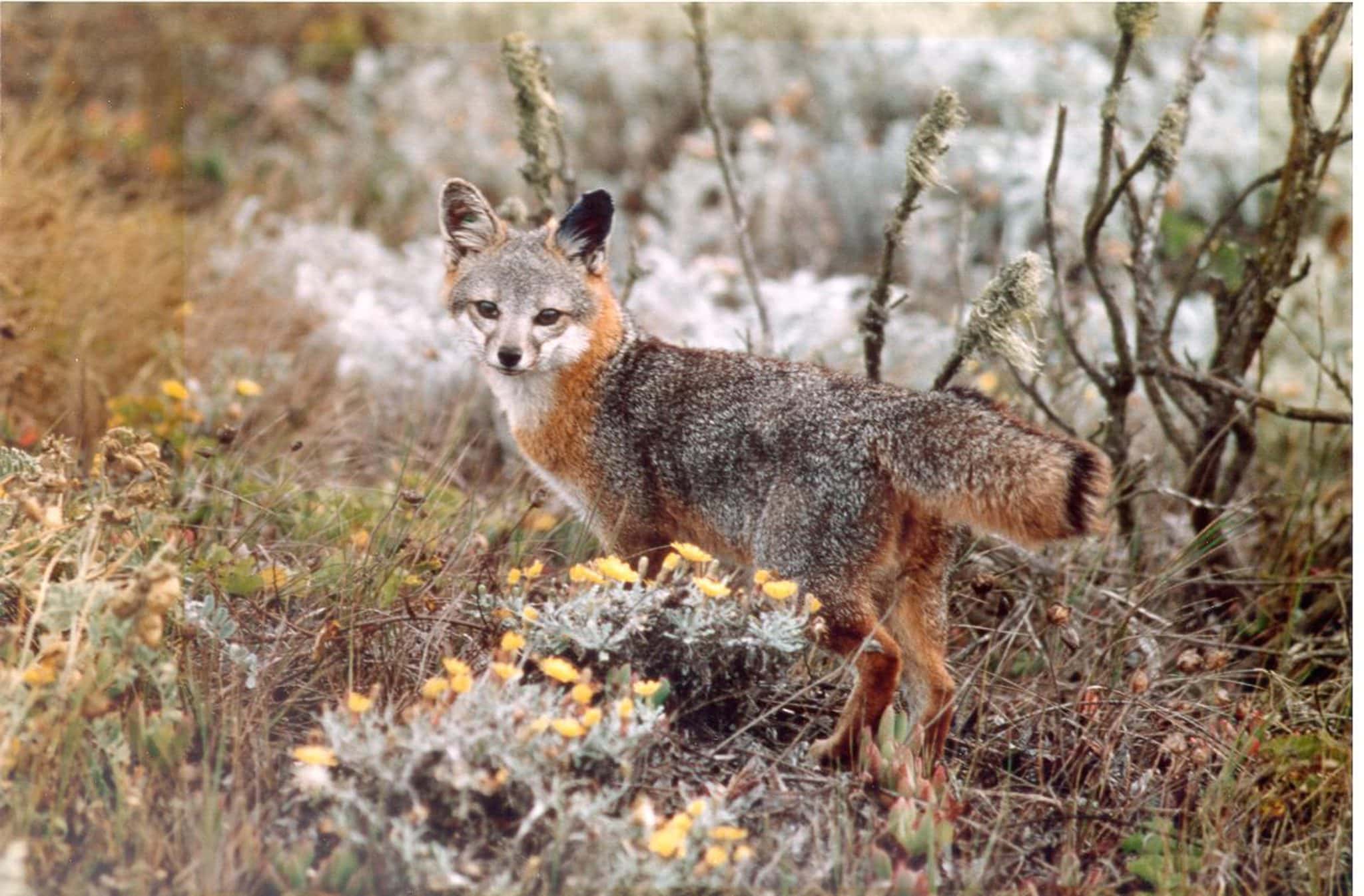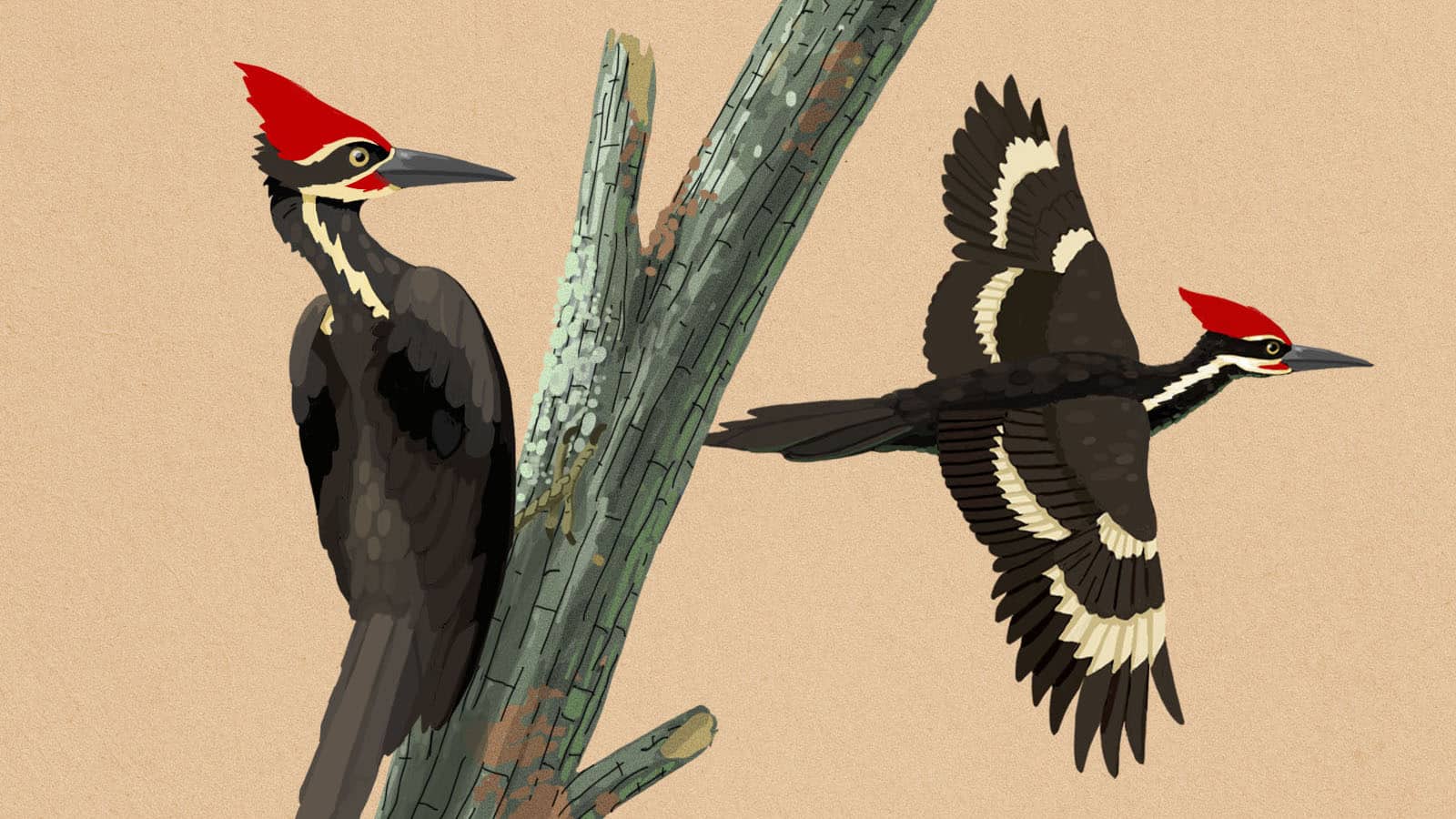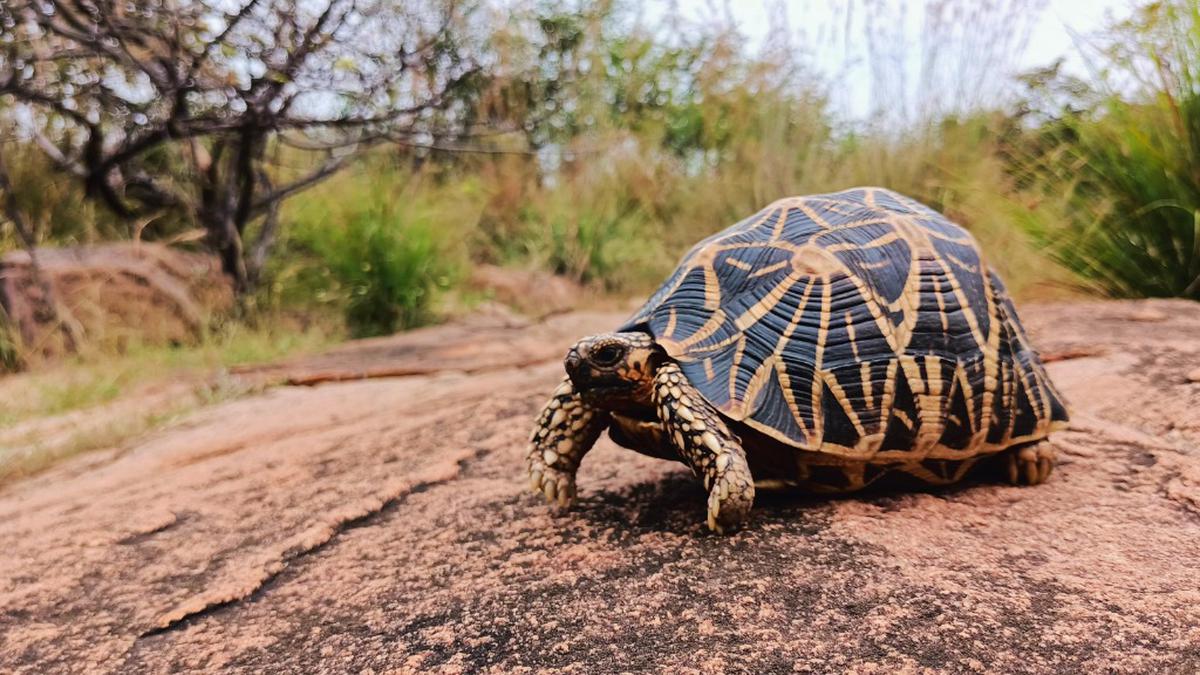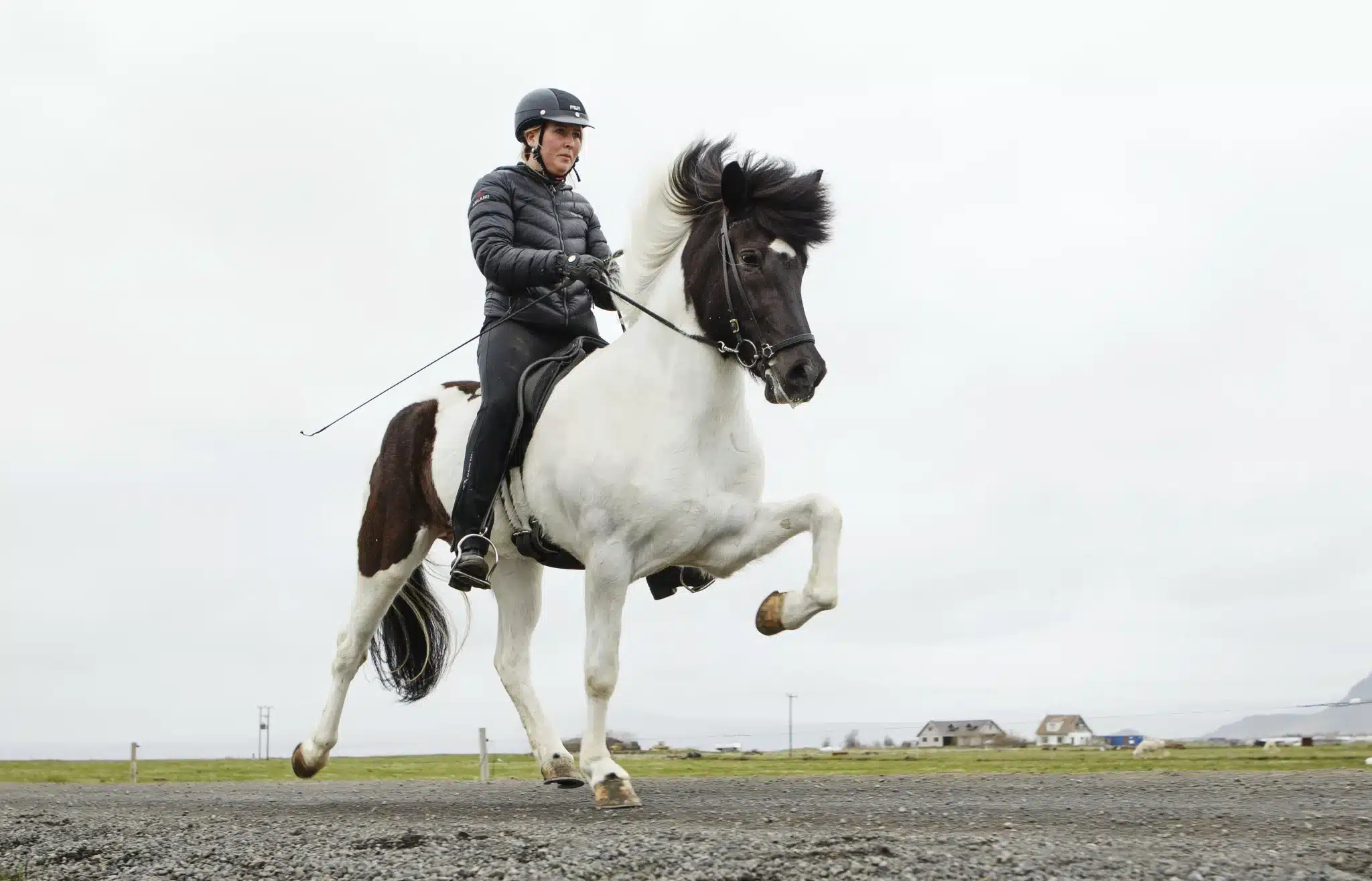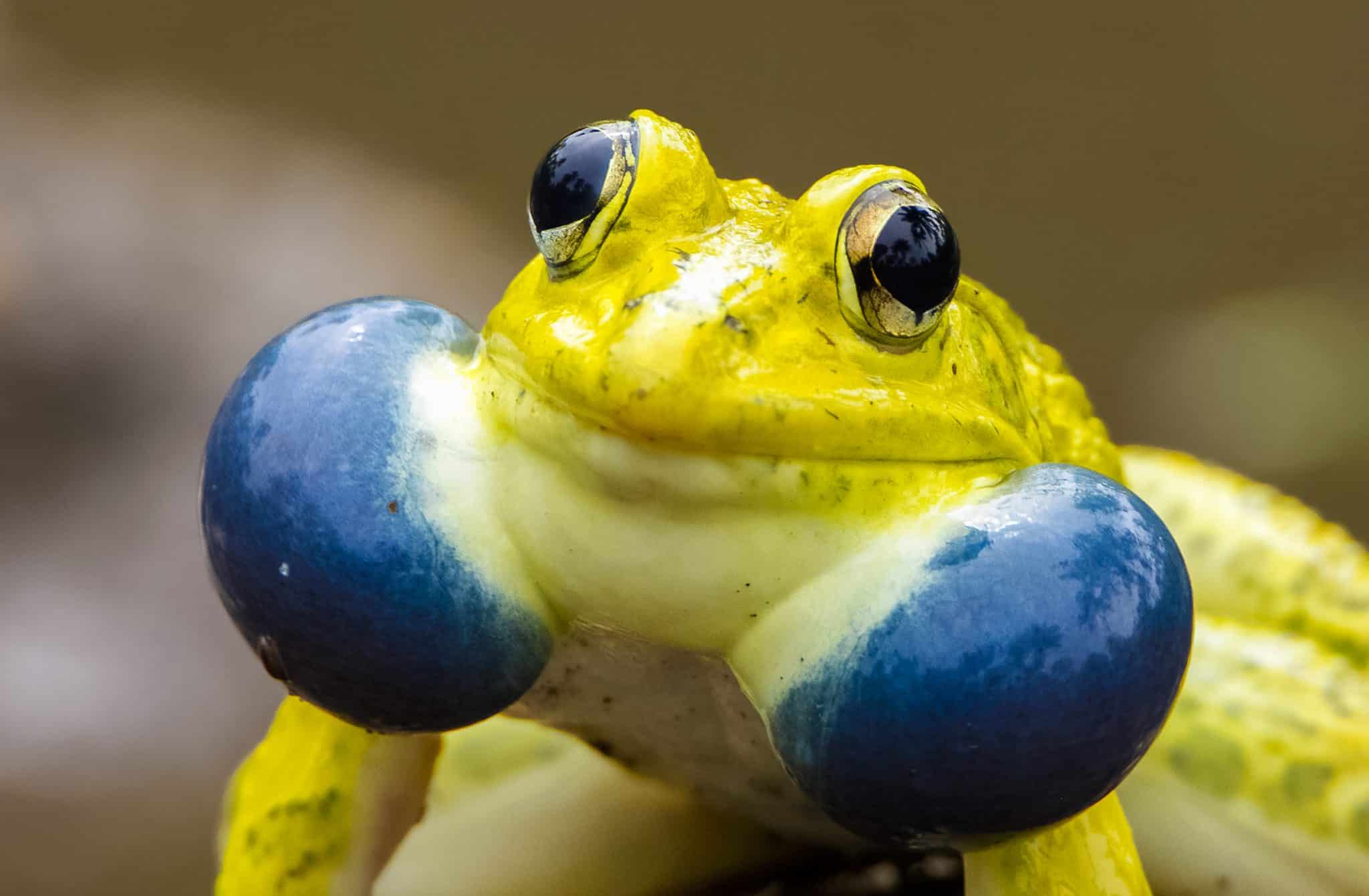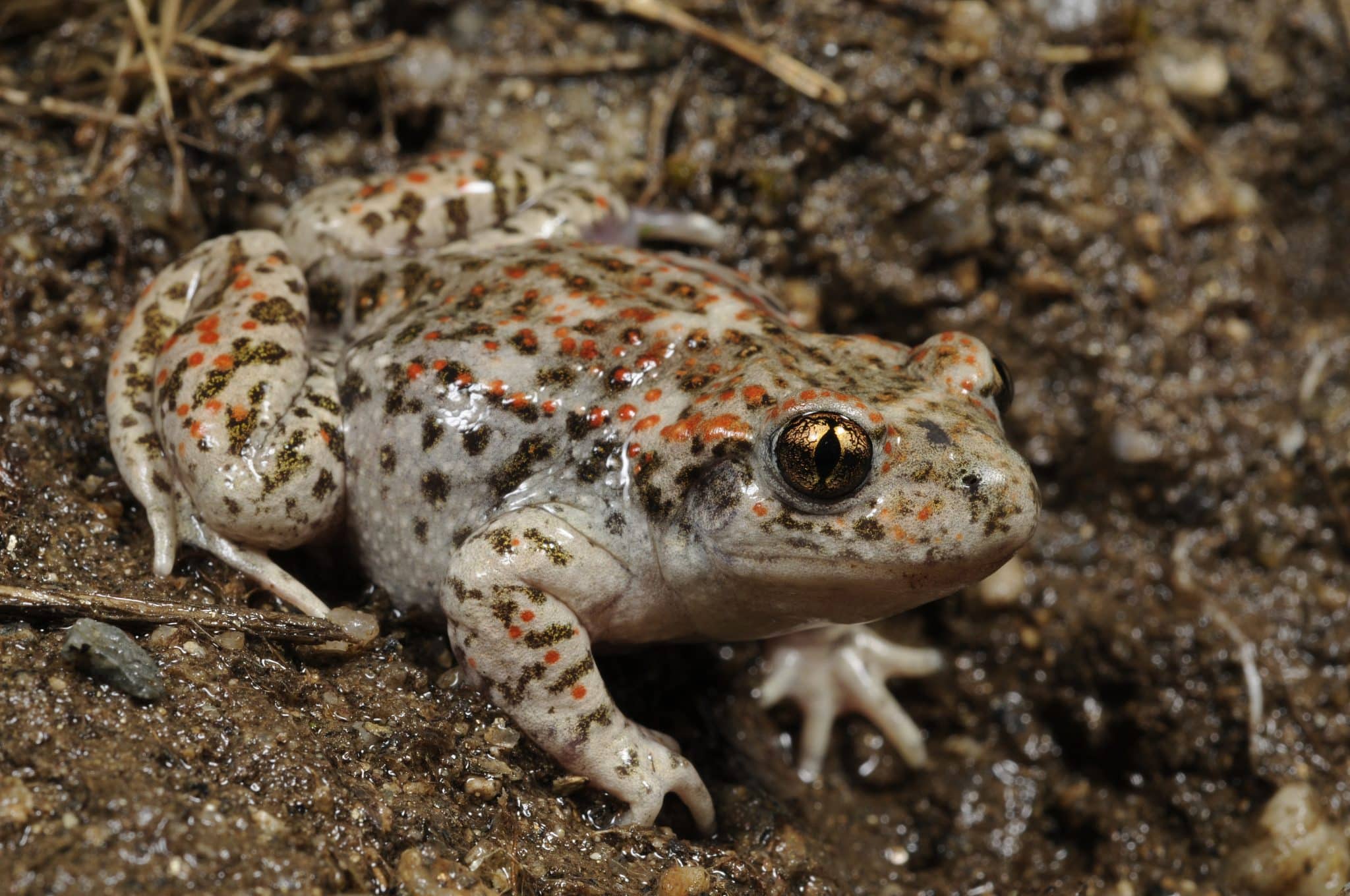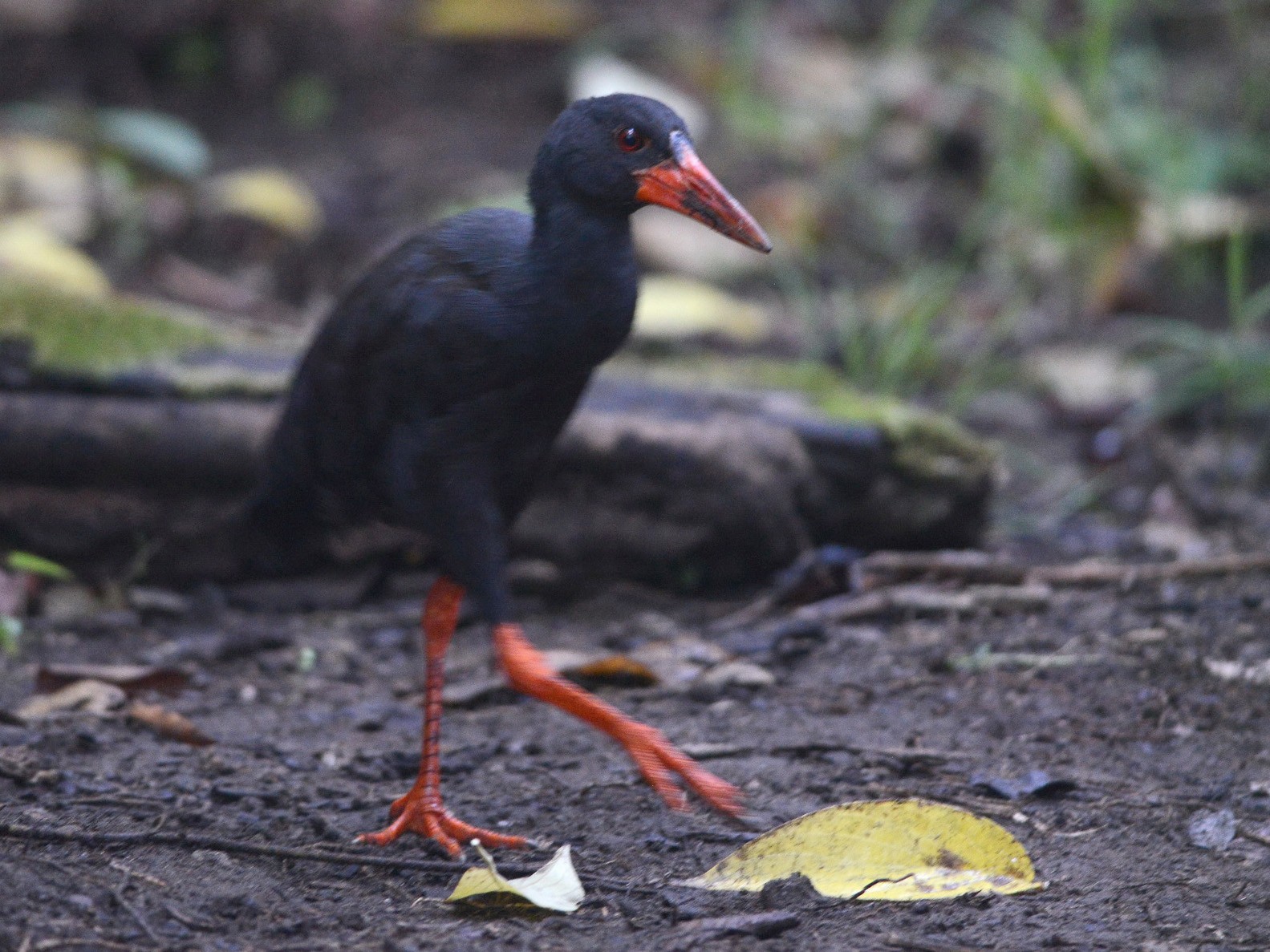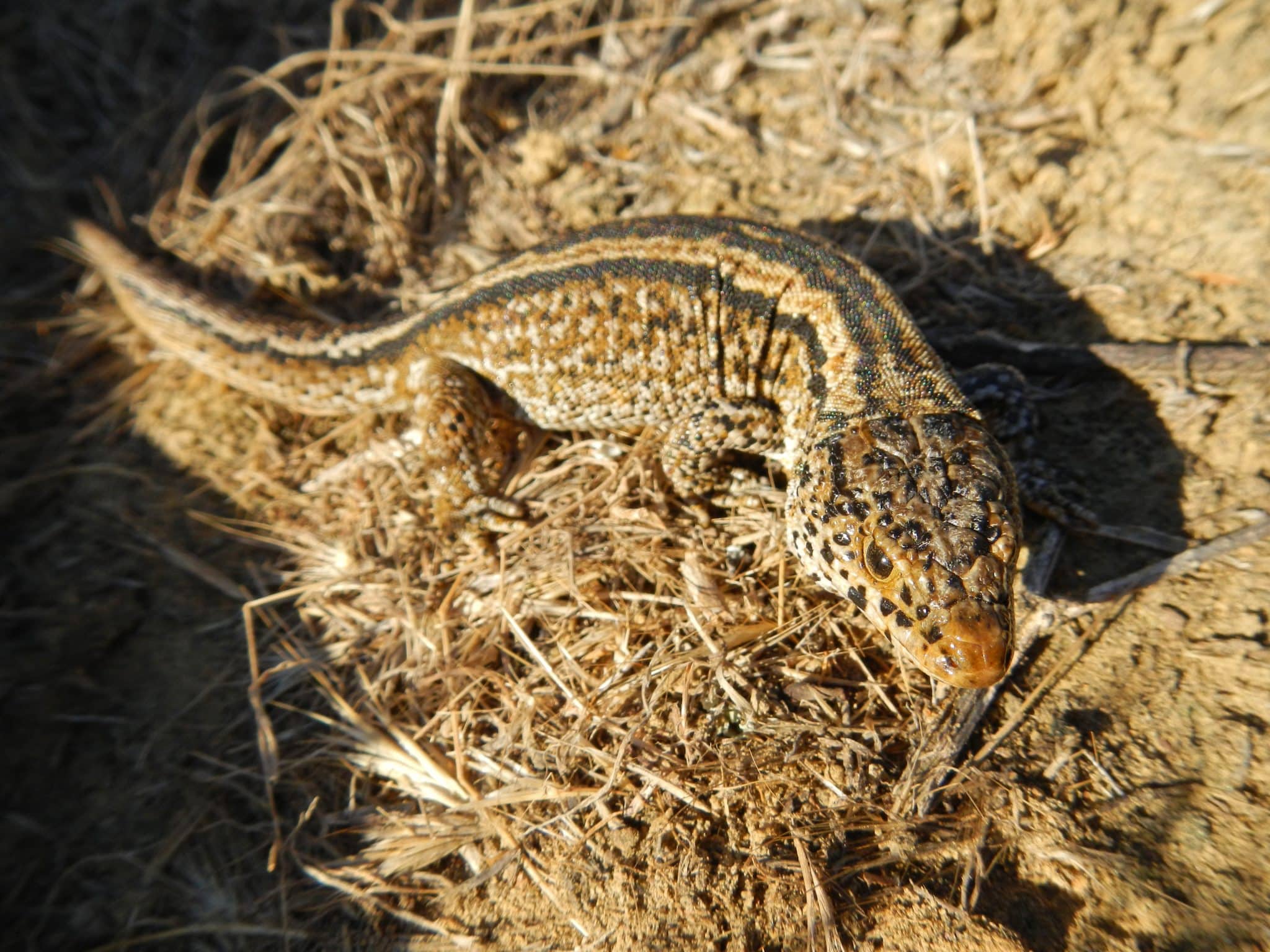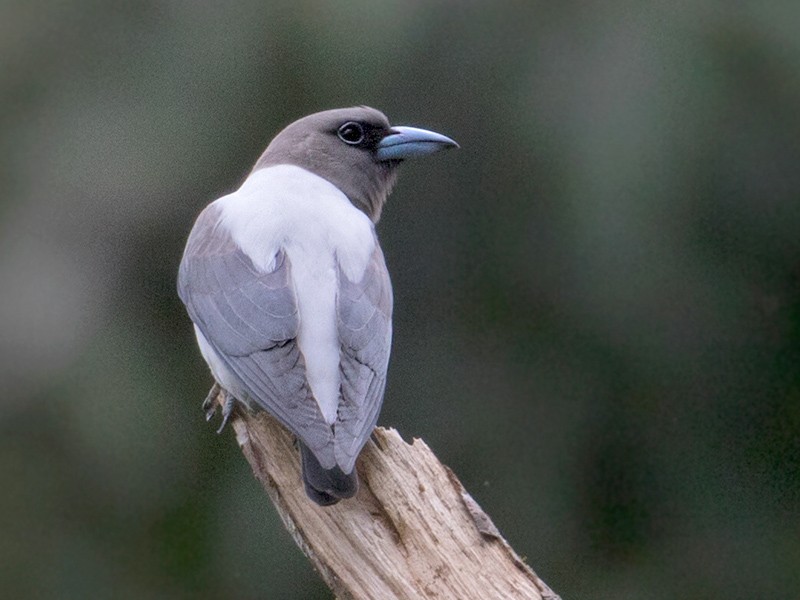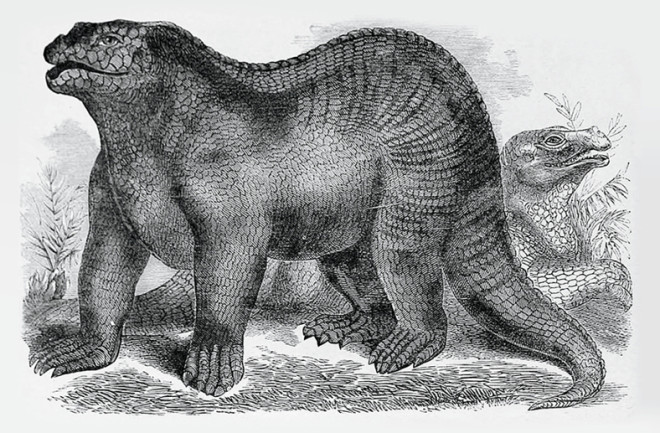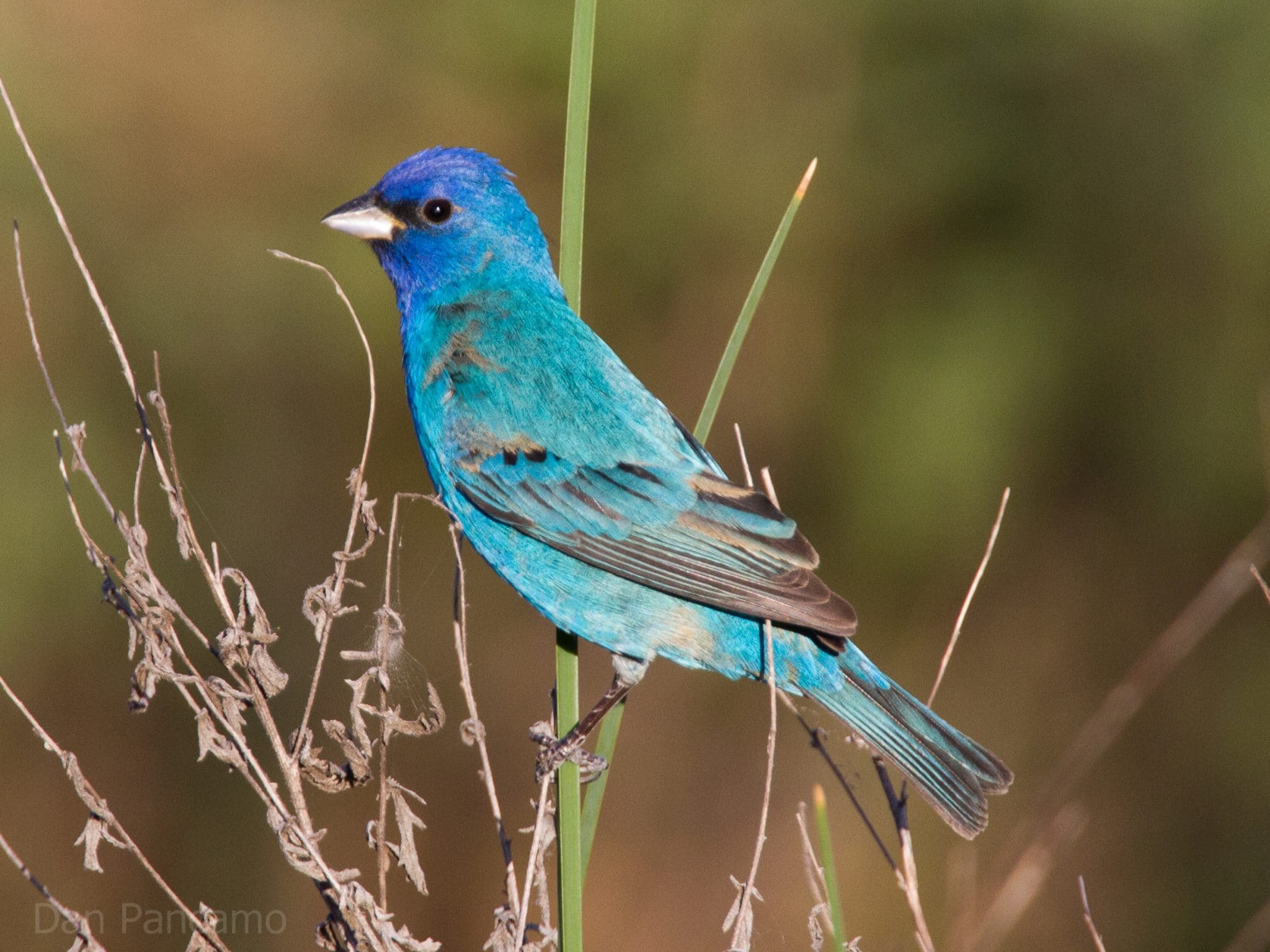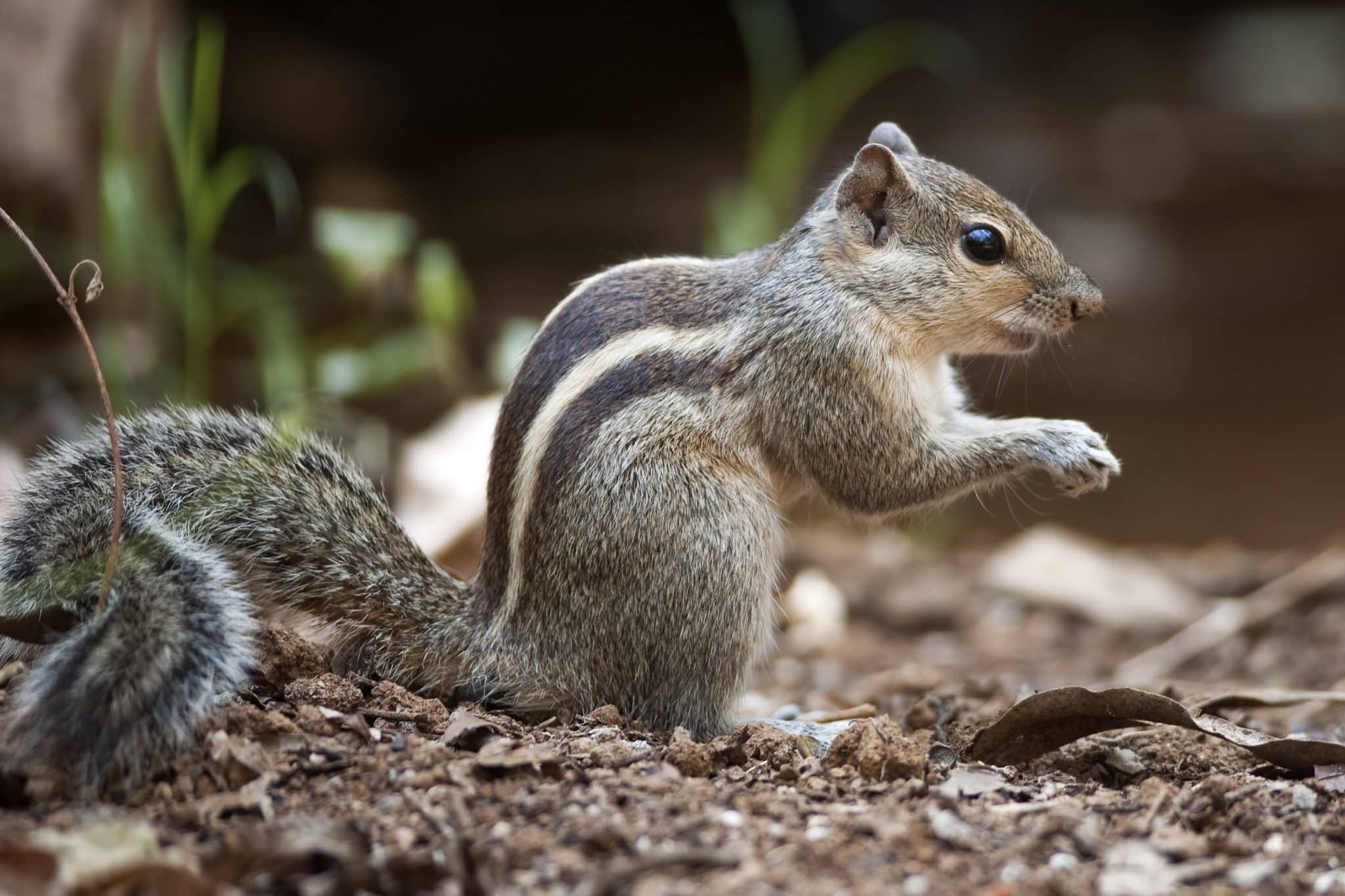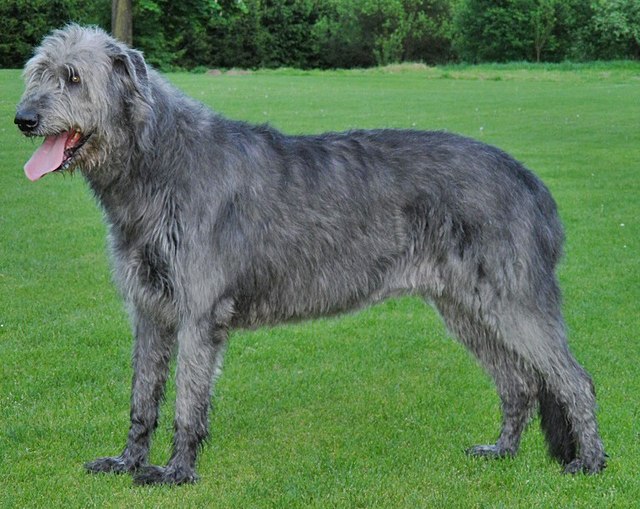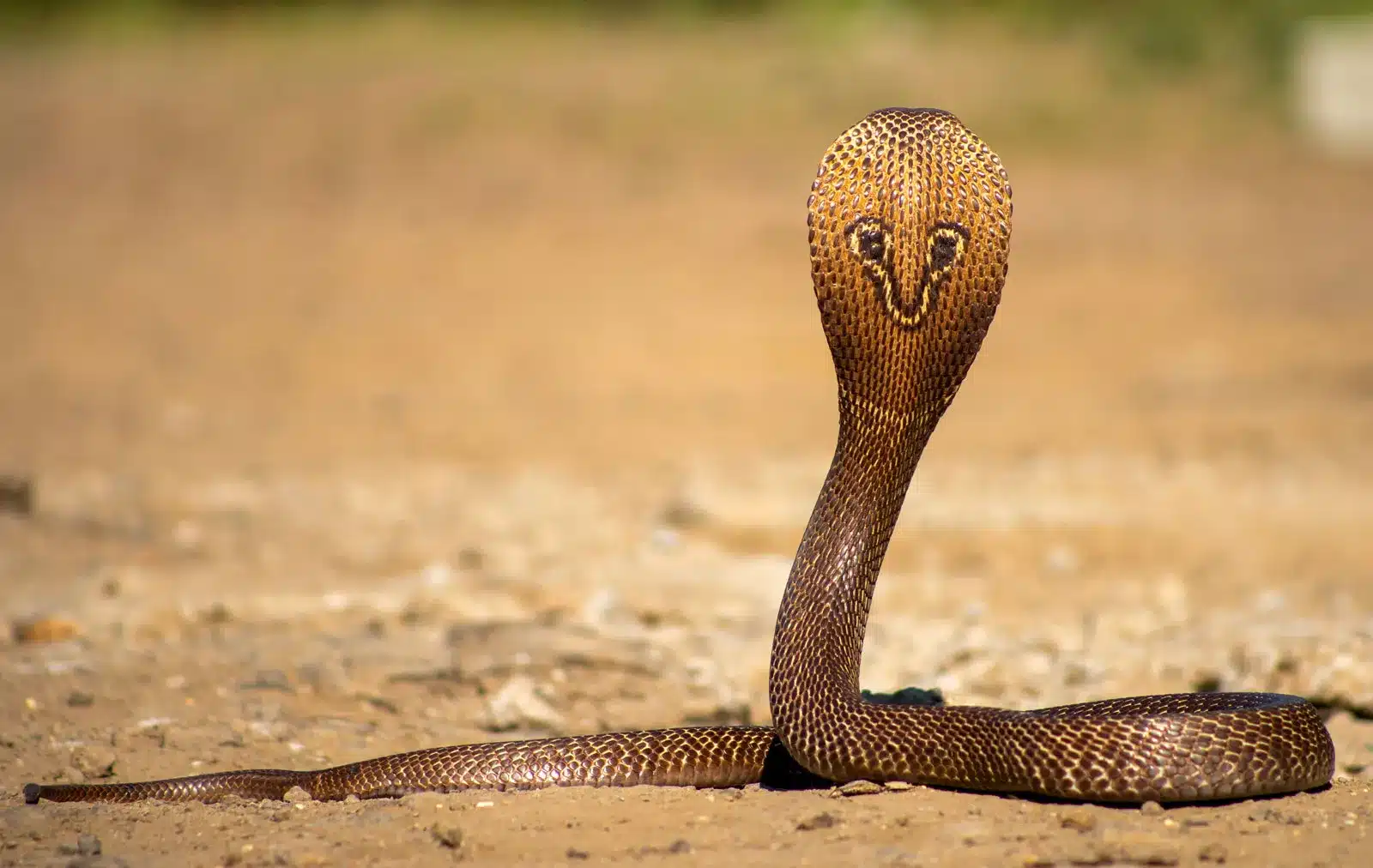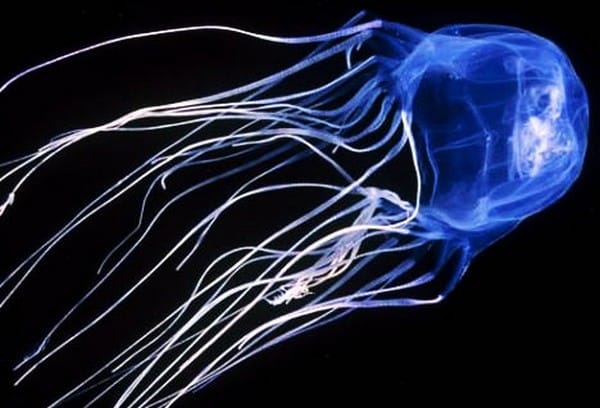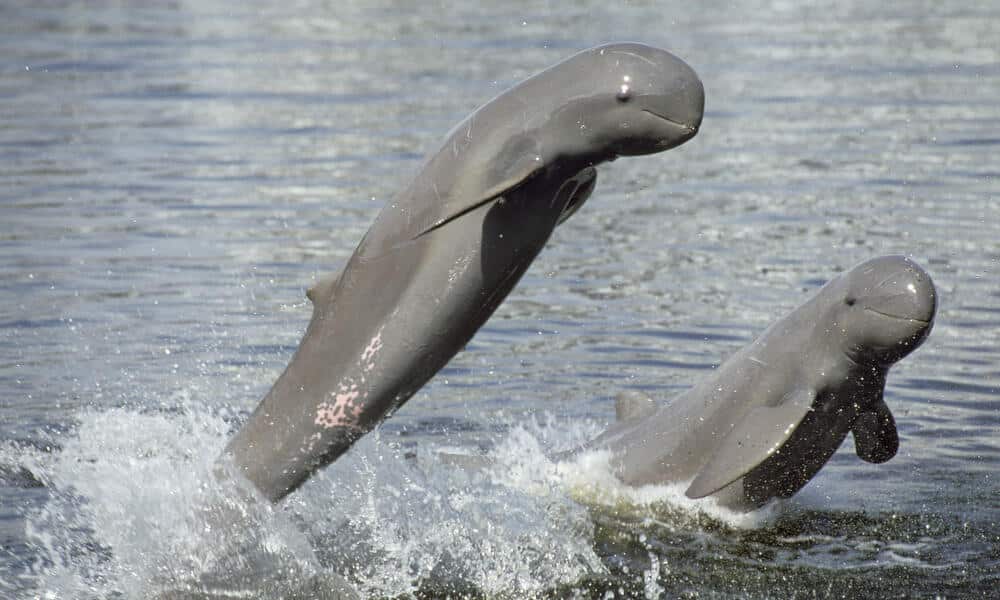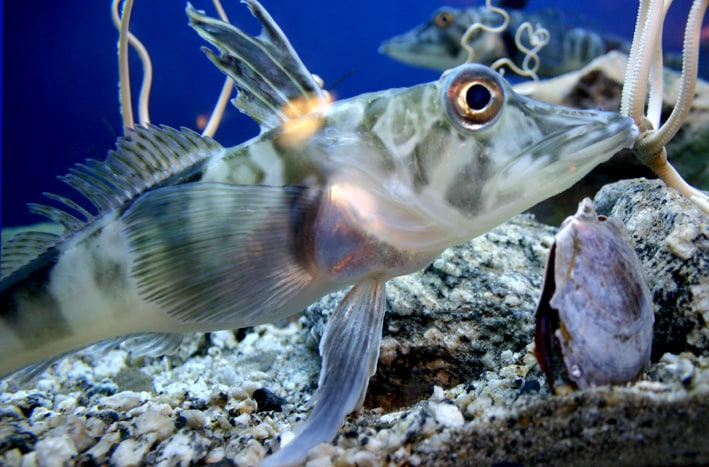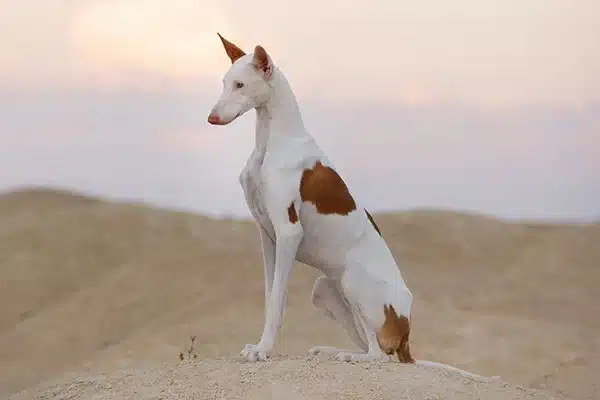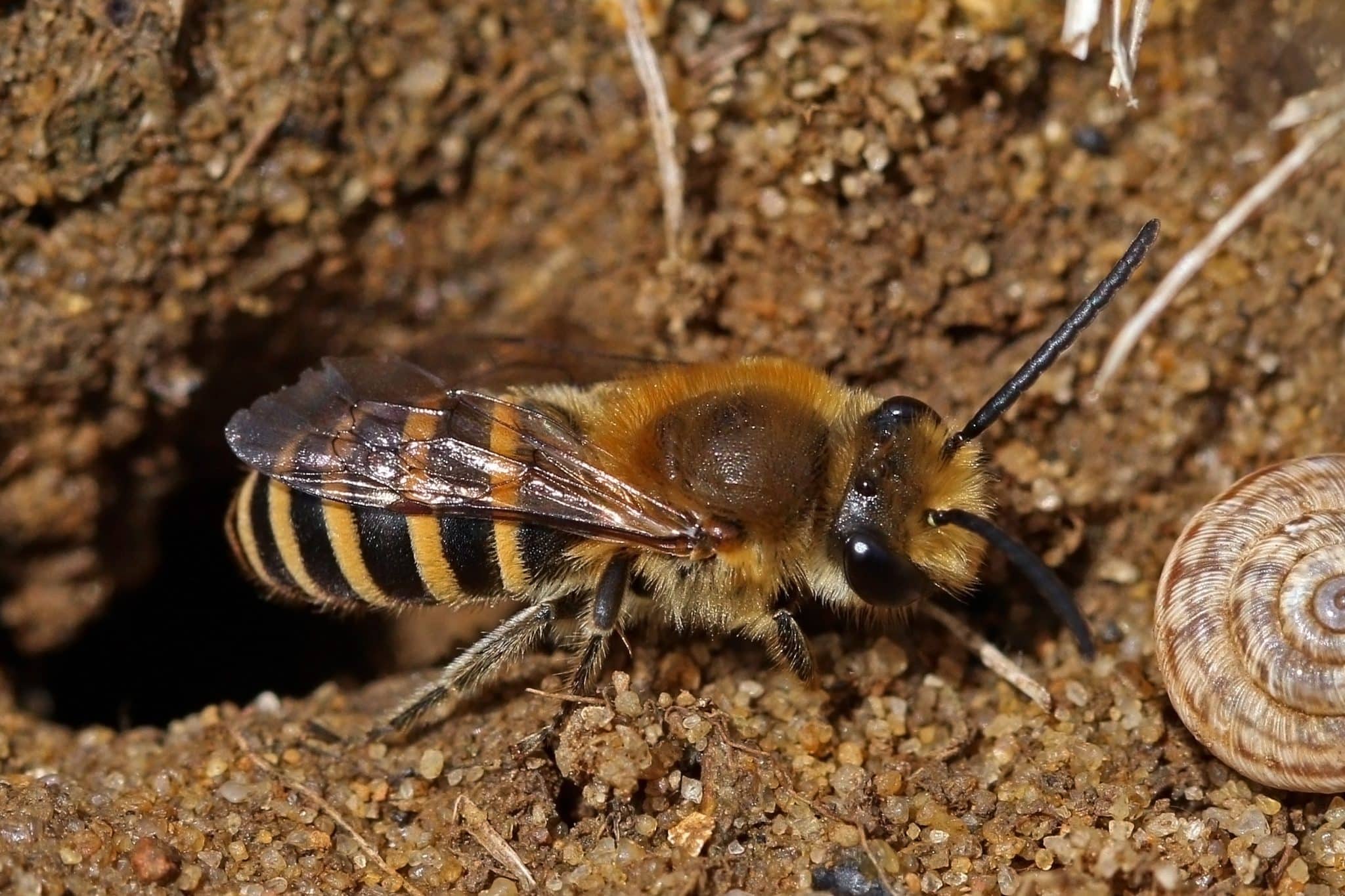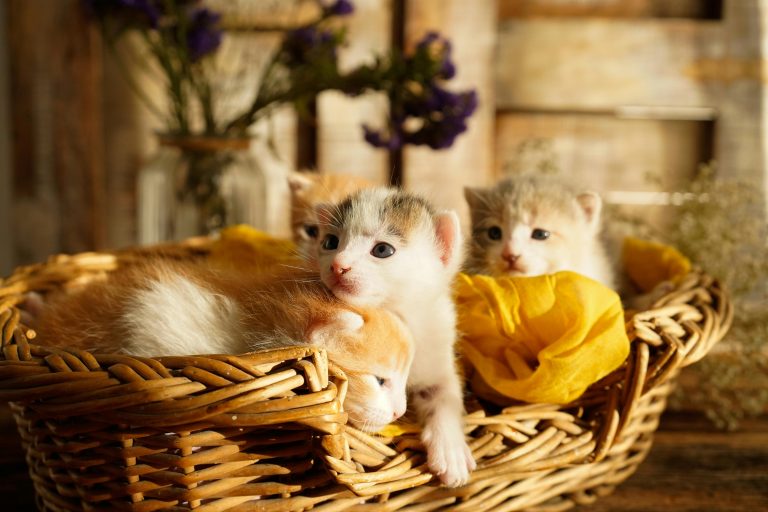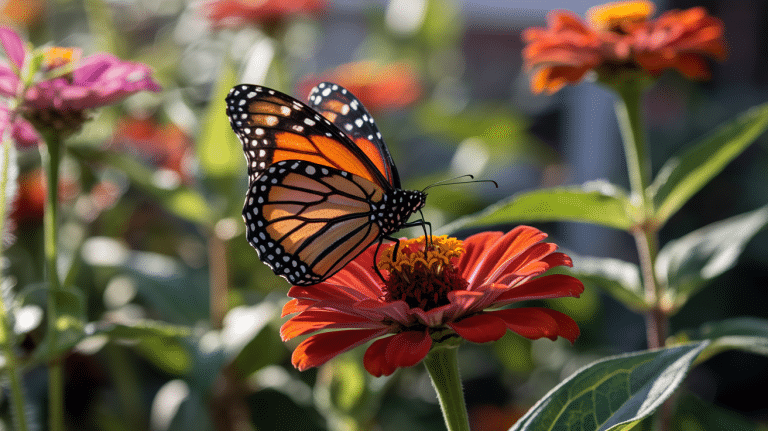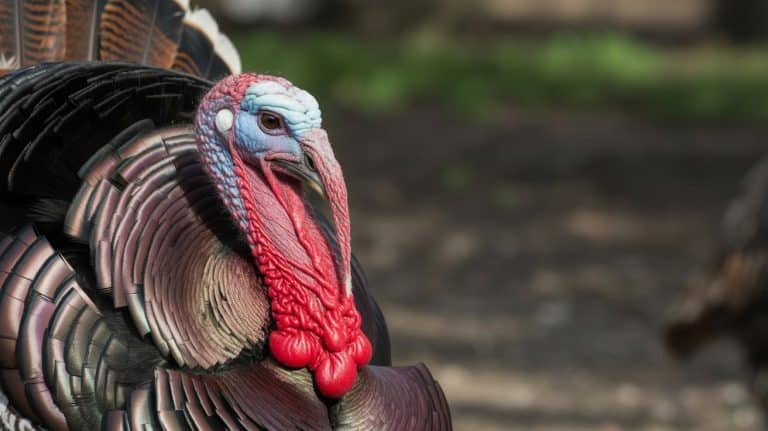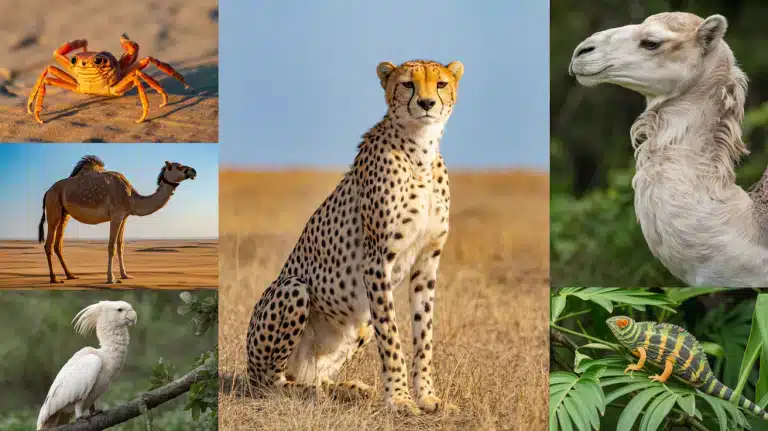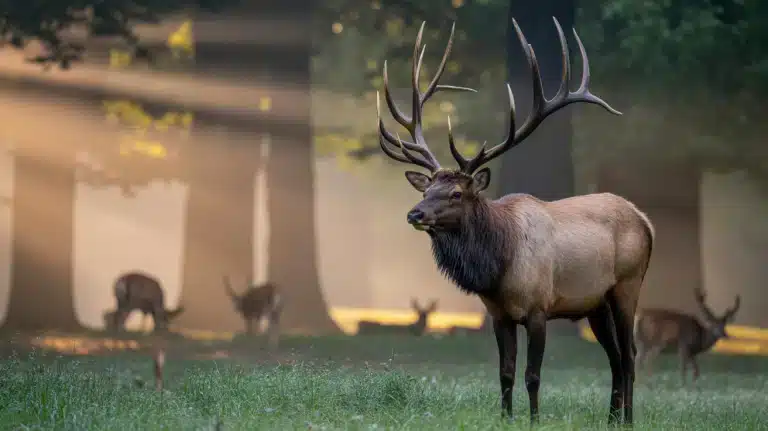The rich and intriguing world of wildlife showcases the wide canvas of nature that it offers to us.
Every single creature and their existence on the planet has an immense role in maintaining the ecological balance.
So, does is the small role contributed by the wide list of animals coming into the family that starts with the letter ‘I’
Thus, we present to you an intriguing piece detailing the life of a few animals that fall into the category and an interesting fact about each.
Right from the majestic Indian Elephants to the magnificent Ivory Gull, this list touches various wings.
So, without further delay, let’s explore the world of diverse wildlife.
1. Ibex
- Place of Origin: Europe, Asia, Africa
- Regions of Habitat: Mountainous regions
- Scientific Name: Capra ibex
The Ibex is a species of wild goat known for its impressive, backward-curving horns. They have a robust build and are adapted to mountain ranges’ steep, rocky terrain.
Interesting Fact: Ibex are incredible climbers. They can scale almost vertical cliffs, a skill that protects them from many predators.
2. Iguana
- Place of Origin: Central and South America, Caribbean
- Regions of Habitat: Rainforests, deserts, coastal areas
- Scientific Name: Iguana iguana
Iguanas are large, tree-dwelling lizards known for their vivid colors, spines running down their backs, and long tails. They are mostly herbivorous.
Interesting Fact: Iguanas have a ‘third eye’ on their head. It’s a parietal eye used for sensing changes in light and dark, helping them detect predators from above.
3. Impala
- Place of Origin: Africa
- Regions of Habitat: Savanna and light woodlands
- Scientific Name: Aepyceros melampus
The Impala is an elegant medium-sized antelope known for its slender, agile body and lyre-shaped horns found in males. They are highly social animals.
Interesting Fact: Impalas are renowned for their jumping ability, the ability to leap distances of up to 10 meters, and heights of up to 3 meters.
4. Indian Rhinoceros
- Place of Origin: Indian subcontinent
- Regions of Habitat: Grasslands, forests, wetlands
- Scientific Name: Rhinoceros unicornis
The Indian rhinoceros is known for its single black horn and grey-brown hide with skin folds, giving it an armored appearance. They are the second-largest rhino species.
Interesting Fact: Despite their heavy build, Indian rhinos are excellent swimmers and can run up to 55 km/h.
5. Indri
- Place of Origin: Madagascar
- Regions of Habitat: Rainforests
- Scientific Name: Indri indri
The Indri is the largest living lemur, characterized by its mostly black fur and contrasting patches of white. They have a short tail and powerful legs.
Interesting Fact: The Indri is known for its loud, distinctive calls that can be heard up to 2 km away, used to communicate within their groups and mark territory.
6. Inland Taipan
- Place of Origin: Australia
- Regions of Habitat: Arid regions, semi-desert
- Scientific Name: Oxyuranus microlepidotus
The Inland Taipan, also known as the fierce snake, is an extremely venomous snake with a color that varies from olive to dark brown.
Interesting Fact: This snake has the most toxic venom of any land snake in the world, but it’s very shy and reclusive, with few recorded human encounters.
7. Irish Setter
- Place of Origin: Ireland
- Regions of Habitat: Domestic
- Scientific Name: Canis lupus familiaris (Breed)
The Irish Setter is a long-haired dog known for its rich red coat. They are energetic, friendly, and enjoy being around people.
Interesting Fact: Originally bred for hunting, they are known for their excellent sense of smell and are often used in field trials and bird hunting.
8. Iberian Lynx
- Place of Origin: Iberian Peninsula
- Regions of Habitat: Mediterranean woodland and scrub
- Scientific Name: Lynx pardinus
The Iberian Lynx is a critically endangered feline species, distinguished by its spotted coat, tufted ears, and short tail. It is the world’s most endangered cat species.
Interesting Fact: Conservation efforts for the Iberian Lynx have successfully increased their numbers, showcasing the impact of targeted wildlife preservation initiatives.
9. Ibis
- Place of Origin: Varies by species
- Regions of Habitat: Wetlands, coastal regions, inland waters
- Scientific Name: Threskiornithidae (Family)
Ibises are wading birds with long legs and necks and distinctive, down-curved bills. They vary in size and color but are often seen in groups near water.
Interesting Fact: Ancient Egyptians revered the Ibis and associated it with the god Thoth, symbolizing wisdom and writing.
10. Italian Greyhound
- Place of Origin: Italy
- Regions of Habitat: Domestic
- Scientific Name: Canis lupus familiaris (Breed)
The Italian Greyhound is a small, slender breed of dog known for its graceful appearance and short, smooth coat. They are affectionate and bond closely with their owners.
Interesting Fact: Despite their delicate appearance, Italian Greyhounds are quite athletic and enjoy running at high speeds, showcasing their sighthound heritage.
11. Ivory Gull
- Place of Origin: Arctic regions
- Regions of Habitat: Arctic coasts and ice floes
- Scientific Name: Pagophila eburnea
The Ivory Gull is a small, strikingly white bird known for inhabiting the extreme northern regions. They have a short yellow bill and black eyes.
Interesting Fact: These birds are uniquely adapted to life in the Arctic, even nesting and feeding on ice floes. They can digest oil from blubber, a rare trait among birds.
12. Indian Elephant
- Place of Origin: Indian subcontinent
- Regions of Habitat: Grasslands, forests, scrublands
- Scientific Name: Elephas maximus indicus
The Indian Elephant is one of the three recognized subspecies of the Asian elephant, notable for its smaller ears and convex back.
Interesting Fact: These elephants are integral to Asian culture and history, often associated with religious and cultural traditions. They are known for their intelligence and strong social bonds.
13. Icelandic Sheepdog
- Place of Origin: Iceland
- Regions of Habitat: Domestic
- Scientific Name: Canis lupus familiaris (Breed)
The Icelandic Sheepdog is a spitz breed known for its double coat, curled tail, and alert expression. They are hardy and agile, built for herding work in rugged terrain.
Interesting Fact: This breed is Iceland’s only native dog and was brought to the island by the first Viking settlers. They are deeply ingrained in Icelandic folklore and history.
14. Imperial Moth
- Place of Origin: North America
- Regions of Habitat: Deciduous forests, urban areas
- Scientific Name: Eacles imperialis
The Imperial Moth is a large, striking moth with yellow and brown coloration. Their wingspan can reach up to 17 cm, making them quite noticeable.
Interesting Fact: The caterpillars of the Imperial Moth are equally impressive, known for their large size and vibrant colors. They undergo dramatic changes during metamorphosis.
15. Inca Tern
- Place of Origin: Peru and Chile
- Regions of Habitat: Coastal areas, islands
- Scientific Name: Larosterna Inca
The Inca Tern is a sleek seabird with a distinctive mustache-like feather pattern on its face. They have dark grey plumage and red-orange beaks and feet.
Interesting Fact: This bird is unique to the Humboldt Current off the coast of Peru and Chile. Their ‘mustache’ is a sign of health and is used in mate selection.
16. Indian Peafowl (Peacock)
- Place of Origin: Indian subcontinent
- Regions of Habitat: Forests, cultivated lands
- Scientific Name: Pavo cristatus
Known for their spectacular plumage, the male peacock displays a colorful fan of feathers adorned with eye-like patterns used in courtship displays.
Interesting Fact: The peacock’s elaborate tail feathers comprise 60% of its total body length and are a classic example of sexual selection in the animal kingdom.
17. Iriomote Cat
- Place of Origin: Iriomote Island, Japan
- Regions of Habitat: Subtropical forests
- Scientific Name: Prionailurus bengalensis iriomotensis
The Iriomote Cat is a small, wild cat with a dark, leopard-like spotted coat. It’s critically endangered and found only on Iriomote Island.
Interesting Fact: This cat is so unique and isolated that it was once considered a separate species. They are highly adapted to their island habitat, including swimming in rivers.
18. Isopod (Giant Marine)
- Place of Origin: Worldwide in deep oceans
- Regions of Habitat: Deep sea floors
- Scientific Name: Bathynomus giganteus
The Giant Marine Isopod resembles a massive pill bug, reaching lengths of over 30 cm. They are scavengers, feeding on dead animals on the seafloor.
Interesting Fact: These creatures are among the oldest surviving forms of life, dating back to the time of the dinosaurs. Their size is an example of deep-sea gigantism.
19. Indochinese Tiger
- Place of Origin: Southeast Asia
- Regions of Habitat: Tropical forests, grasslands
- Scientific Name: Panthera tigris corbetti
The Indochinese Tiger is smaller and darker than Bengal tigers, with shorter, narrower stripes. They are solitary and elusive.
Interesting Fact: This tiger subspecies is critically endangered due to poaching and habitat loss. Conservation efforts are in place to protect their dwindling numbers.
20. Iberian Pig
- Place of Origin: Iberian Peninsula
- Regions of Habitat: Oak forests
- Scientific Name: Sus scrofa domestica
The Iberian Pig is a traditional breed known for its dark coat and ability to store fat, leading to its prized meat quality.
Interesting Fact: The diet of these pigs includes acorns, which contribute to the unique flavor of the famous Jamón ibérico, a type of cured ham.
21. Indian Flying Fox
- Place of Origin: South Asia
- Regions of Habitat: Forests, wetlands, urban areas
- Scientific Name: Pteropus giganteus
One of the largest bat species, the Indian Flying Fox, has a fox-like face, reddish-brown fur, and a wingspan of up to 1.5 meters.
Interesting Fact: Despite their intimidating size, these bats are fruit eaters and play a vital role in seed dispersal and pollination in their ecosystems.
22. Island Fox
- Place of Origin: Channel Islands, California
- Regions of Habitat: Island ecosystems
- Scientific Name: Urocyon littoralis
The Island Fox is small, similar in size to a domestic cat, with grey and rust-colored fur. They are unique to the Channel Islands.
Interesting Fact: This species evolved into a smaller size due to its isolated island habitat, a phenomenon known as insular dwarfism.
23. Ivory-billed Woodpecker
- Place of Origin: Southeastern United States, Cuba
- Regions of Habitat: Swamps, old-growth forests
- Scientific Name: Campephilus principalis
Once the largest woodpecker in America, it’s known for its striking black and white plumage and prominent red crest.
Interesting Fact: Thought to be extinct or critically endangered, there have been sporadic unconfirmed sightings, making it a subject of interest and mystery among ornithologists.
24. Indian Star Tortoise
- Place of Origin: India, Sri Lanka
- Regions of Habitat: Dry areas, scrub forests
- Scientific Name: Geochelone elegans
This tortoise is known for its star-patterned shell, a series of yellow lines radiating from the center of each dark plate.
Interesting Fact: Due to their unique and attractive shell pattern, Indian Star Tortoises are heavily trafficked for the exotic pet trade, leading to concerns about their wild populations.
25. Icelandic Horse
- Place of Origin: Iceland
- Regions of Habitat: Domestic, adapted to harsh Icelandic environment
- Scientific Name: Equus ferus caballus (Breed)
Small, sturdy, and long-lived, Icelandic Horses are known for their thick coats and unique gaits, like the tölt and flying pace.
Interesting Fact: Brought to Iceland by Vikings in the 9th century, these horses have remained genetically pure for centuries due to Iceland’s strict no-import policy for horses.
26. Indian Bullfrog
- Place of Origin: Indian subcontinent
- Regions of Habitat: Wetlands, agricultural areas
- Scientific Name: Hoplobatrachus tigerinus
Notable for its large size and dramatic color changes, the male Indian Bullfrog turns bright yellow with blue vocal sacs during the mating season.
Interesting Fact: This species is known for its loud, resonant croak and has been introduced to Madagascar, which is considered invasive.
27. Iberian Midwife Toad
- Place of Origin: Iberian Peninsula
- Regions of Habitat: Streams, forests
- Scientific Name: Alytes cisternasii
A small toad species known for its distinct call and brownish-grey color with darker spots. Males carry fertilized eggs on their backs.
Interesting Fact: The male midwife toad wraps the egg strings around his legs and carries them until they are ready to hatch, a unique reproductive behavior.
28. Invisible Rail
- Place of Origin: Indonesia
- Regions of Habitat: Wetlands, marshes
- Scientific Name: Habroptila wallacii
The Invisible Rail is a secretive, rarely-seen bird known for its elusive nature. It has a dark plumage and is adapted to dense marsh vegetation.
Interesting Fact: Its name, “Invisible Rail,” comes from its habit of rarely being seen and staying hidden in dense cover, making it challenging for birdwatchers and researchers.
29. Island Night Lizard
- Place of Origin: Channel Islands, California
- Regions of Habitat: Rocky shores, scrubland
- Scientific Name: Xantusia riversiana
A small, slow-moving lizard with a brown or olive color, the Island Night Lizard lives in crevices and under rocks. It has adapted well to its island environment.
Interesting Fact: Unusually for lizards, they give birth to live young rather than laying eggs. They have a long lifespan, living up to 30 years.
30. Ivory-backed Woodswallow
- Place of Origin: Australia
- Regions of Habitat: Open forests, woodlands
- Scientific Name: Artamus monachus
This bird has a distinctive ivory-colored back and wings, contrasting with its dark head. Woodswallows are social birds often seen in flocks.
Interesting Fact: Ivory-backed Woodswallows are known for their aerial acrobatics while hunting insects. They are also known to ‘hawk’ insects, catching them in mid-air.
31. Iguanodon
- Place of Origin: Europe (Extinct prehistoric animal)
- Regions of Habitat: Woodlands, floodplains (historically)
- Scientific Name: Iguanodon bernissartensis
Iguanodon was a large herbivorous dinosaur, recognizable by its large thumb spikes, which were likely used for defense against predators.
Interesting Fact: One of the first dinosaurs to be discovered and named, Iguanodon’s understanding has evolved significantly over time, with early reconstructions dramatically differing from current views.
32. Indigo Bunting
- Place of Origin: North America
- Regions of Habitat: Farmlands, brush areas
- Scientific Name: Passerina cyanea
The male Indigo Bunting is known for its vibrant blue plumage during the breeding season, while the female is brown. They are small seed-eating birds.
Interesting Fact: These birds use the stars for navigation during their nocturnal migration, one of the few species known to do so.
33. Indian Palm Squirrel
- Place of Origin: Indian subcontinent
- Regions of Habitat: Forests, urban areas
- Scientific Name: Funambulus palmarum
A common sight in India, this small squirrel has a distinctive three-striped pattern on its back and a bushy tail. It is agile and quick.
Interesting Fact: Indian Palm Squirrels are considered sacred in Hinduism. According to legend, they received their stripes from Lord Rama as a sign of his gratitude.
34. Irish Wolfhound
- Place of Origin: Ireland.
- Regions of Habitat: Originally bred for hunting wolves, they are now found worldwide.
- Scientific Name: Canis lupus familiaris.
The Irish Wolfhound is a giant dog breed known for its immense size, gentle nature, and shaggy coat. They are often referred to as “gentle giants.”
Interesting Fact: Irish wolfhounds have a history dating back to ancient Ireland, where the nobility used them to hunt large game, including wolves and wild boars. They are one of the tallest dog breeds in the world.
35. Indian Cobra
- Place of Origin: India and surrounding regions.
- Regions of Habitat: Forests, grasslands, and urban areas.
- Scientific Name: Naja Naja
The Indian Cobra is a venomous snake known for its distinctive hood and markings. It is a member of India’s “Big Four” venomous snakes.
Interesting Fact: Indian Cobras are highly revered and feared in Indian culture. They are often associated with snake charmers and are featured in many myths and stories.
36. Irukandji Jellyfish
- Place of Origin: Northern Australia.
- Regions of Habitat: Ocean waters, often near the coast.
- Scientific Name: Carukia barnesi
Irukandji jellyfish are tiny and nearly transparent, making them difficult to spot in the water.
Interesting Fact: Despite their small size, they possess venom that can cause Irukandji syndrome, a potentially lethal condition in humans.
37. Irrawaddy Dolphin
- Place of Origin: Coastal regions of South and Southeast Asia.
- Regions of Habitat: Rivers, estuaries, and coastal waters.
- Scientific Name: Orcaella brevirostris
Irrawaddy dolphins have rounded foreheads and lack the long snout typical of most dolphin species.
Interesting Fact: They are known for their unique behavior of spitting water from their mouths, which is believed to be a form of communication.
38. Icefish
- Place of Origin: Antarctica, Southern Ocean.
- Regions of Habitat: Icefish are primarily found in the cold waters surrounding Antarctica.
- Scientific Name: Channichthyidae
Icefish are a unique group of fish adapted to extreme cold environments. They have translucent bodies, lack red blood cells, and have antifreeze proteins to survive in subzero waters. They are known for their remarkable adaptation to the harsh Antarctic conditions.
Interesting Fact: Icefish are the only vertebrates on Earth that lack hemoglobin, the protein responsible for transporting oxygen in the blood. Instead, they rely on other mechanisms, such as larger hearts and blood vessels, to circulate oxygen.
39. Ibizan Hound
- Place of Origin: Spain (specifically the island of Ibiza).
- Regions of Habitat: Ibizan Hounds are domesticated dogs in households worldwide as pets and hunting companions.
- Scientific Name: Canis lupus familiaris
Ibizan Hounds are elegant, slender dogs known for their athleticism and agility. They have a distinct appearance with tall, upright ears and a sleek coat. Thanks to their keen sight and speed, they are often used for hunting small game.
Interesting Fact: Ibizan Hounds are among the oldest and rarest dog breeds. They are known for their quiet and reserved temperament, making them loyal and affectionate companions for their owners.
40. Ivy Bee
This list of interesting wildlife creatures, starting with the letter ‘I,’ gives us a detailed insight into the diverse magnificence of nature.
Despite sharing the same family, various animals inhabit a variety of characteristics by residing in different geographical settings.
Each creature exhibits different characteristics and has a story to tell.
The depth of this article also paves the way for us to ponder what role wildlife plays in maintaining nature’s balance.
Do let us know how you liked our detailed piece and what more animals could have been added that we dropped.

